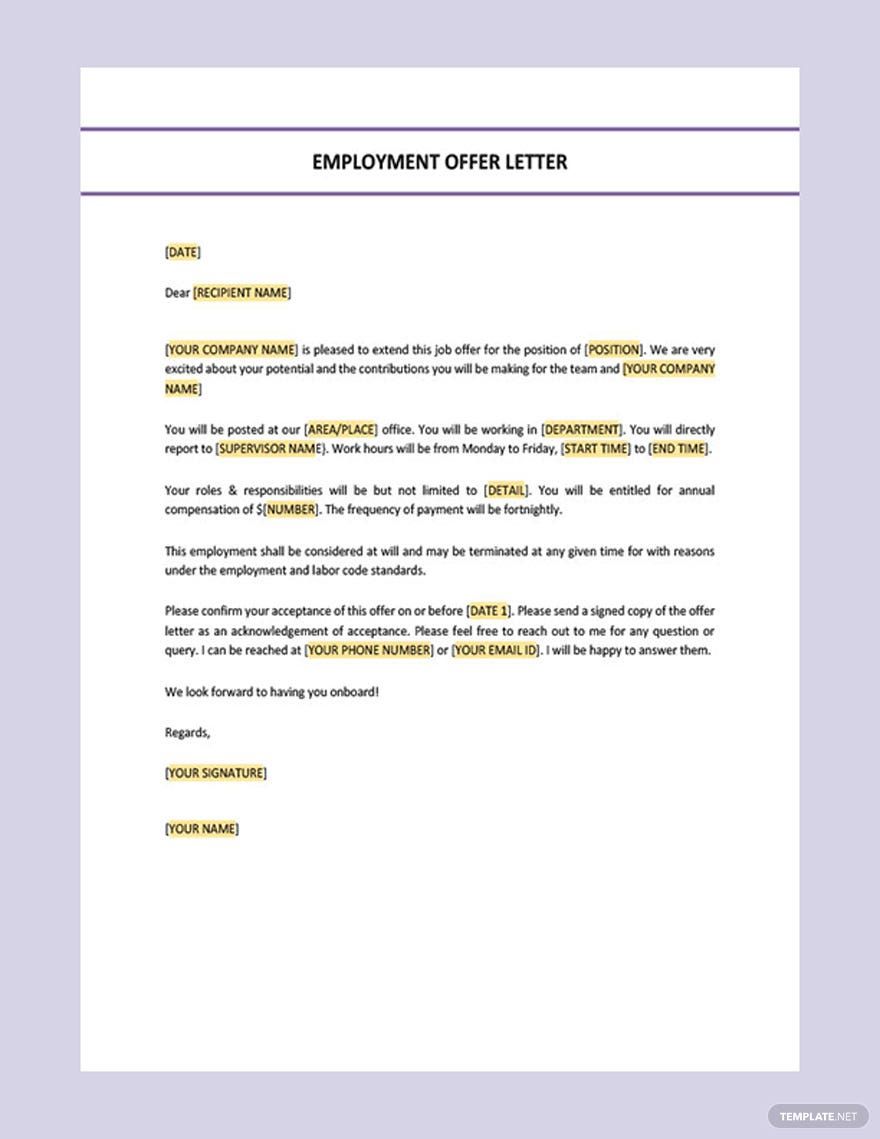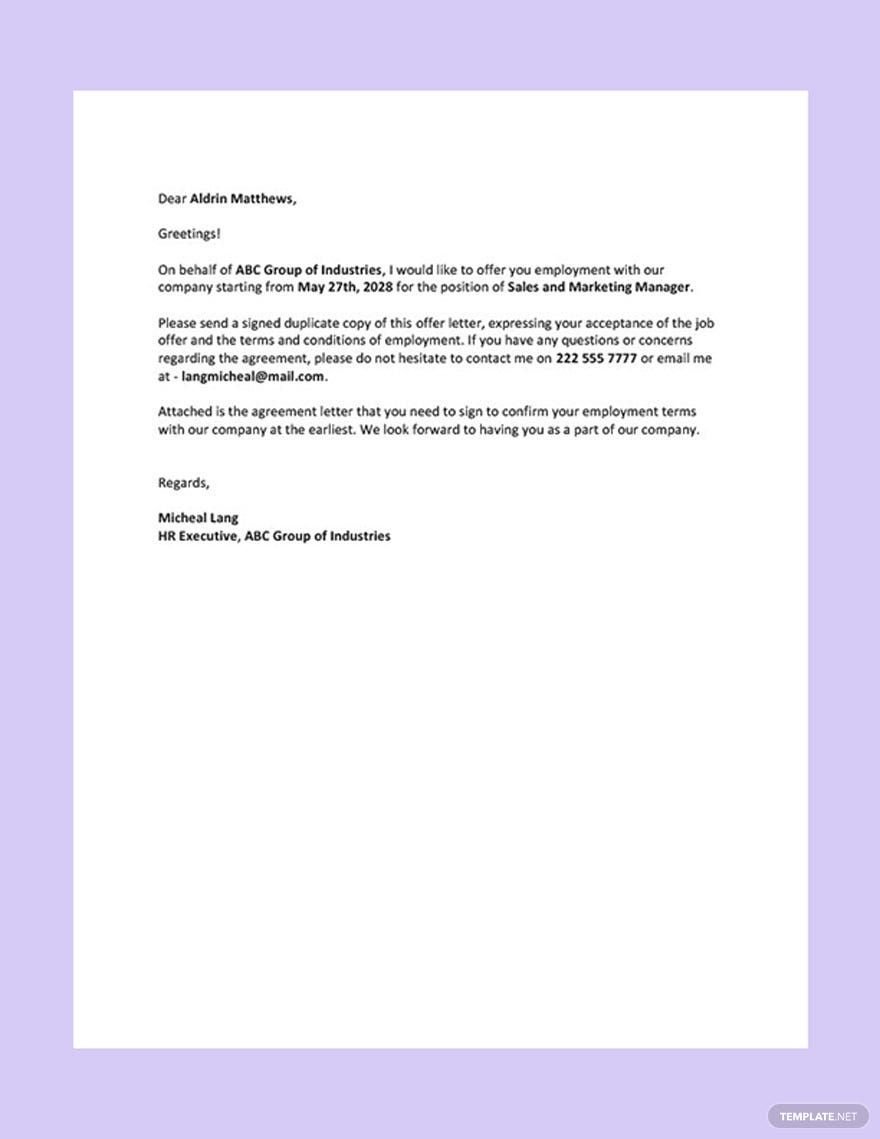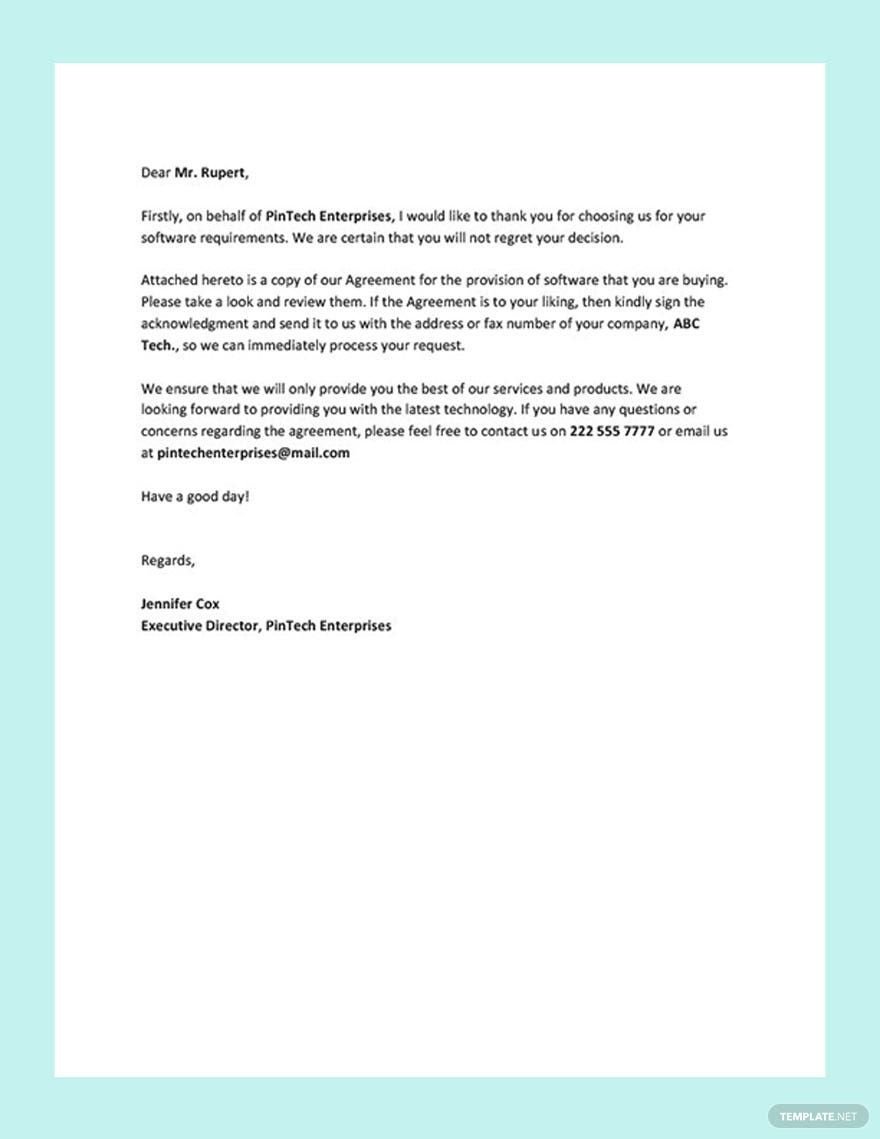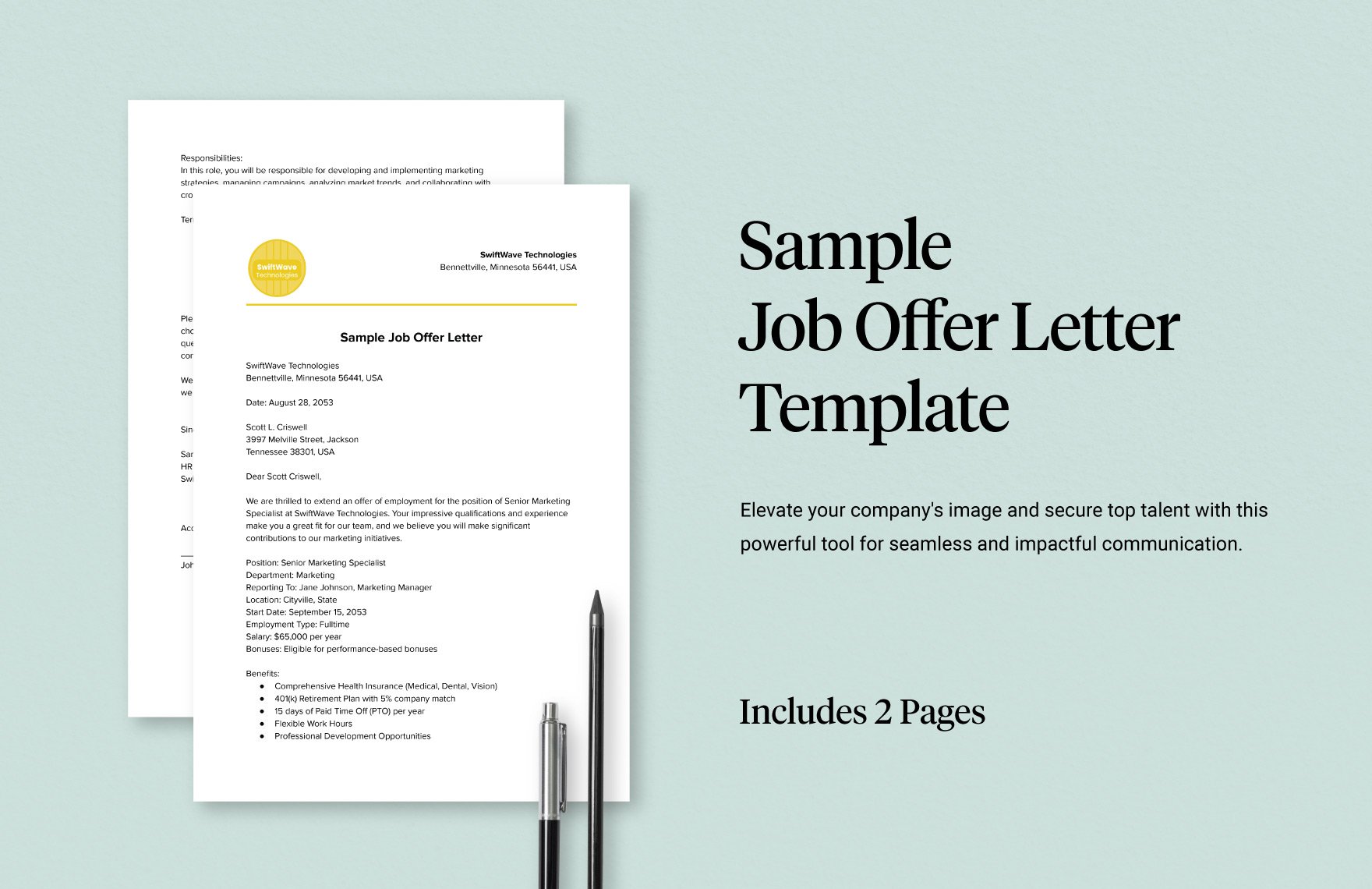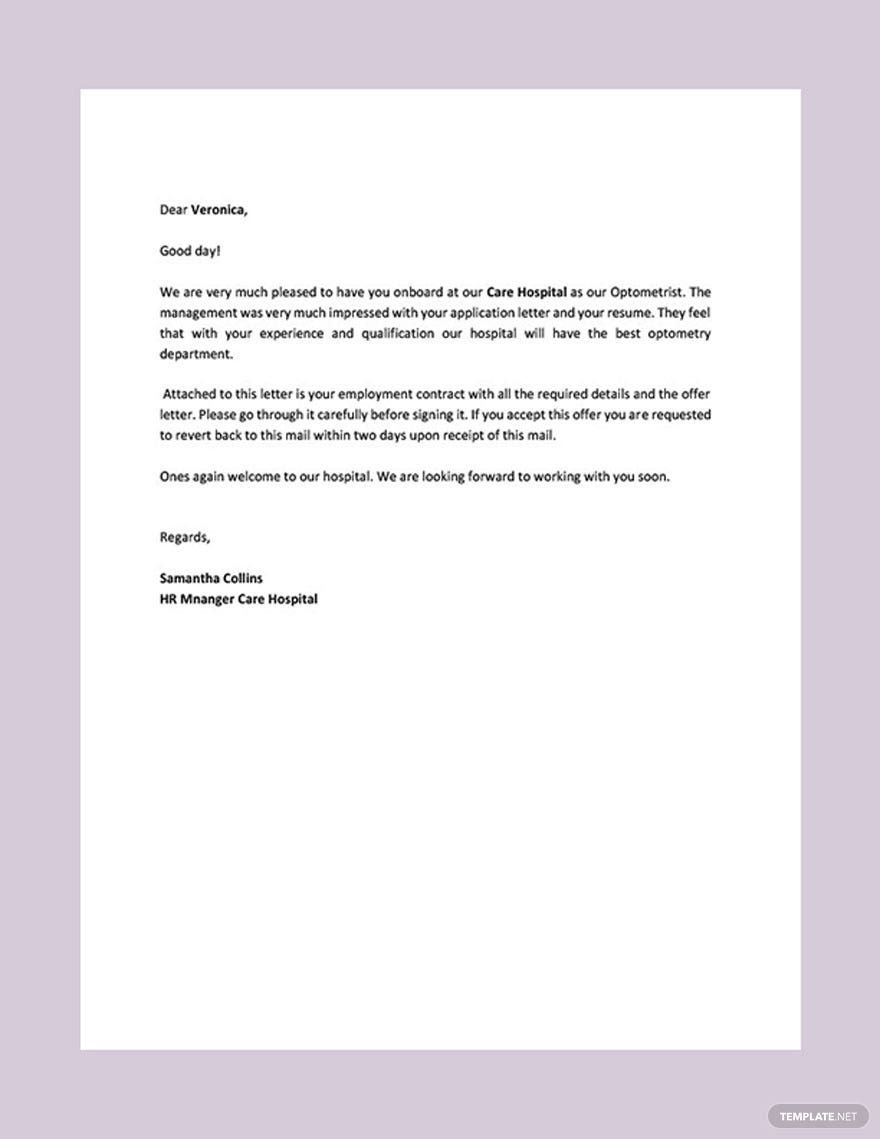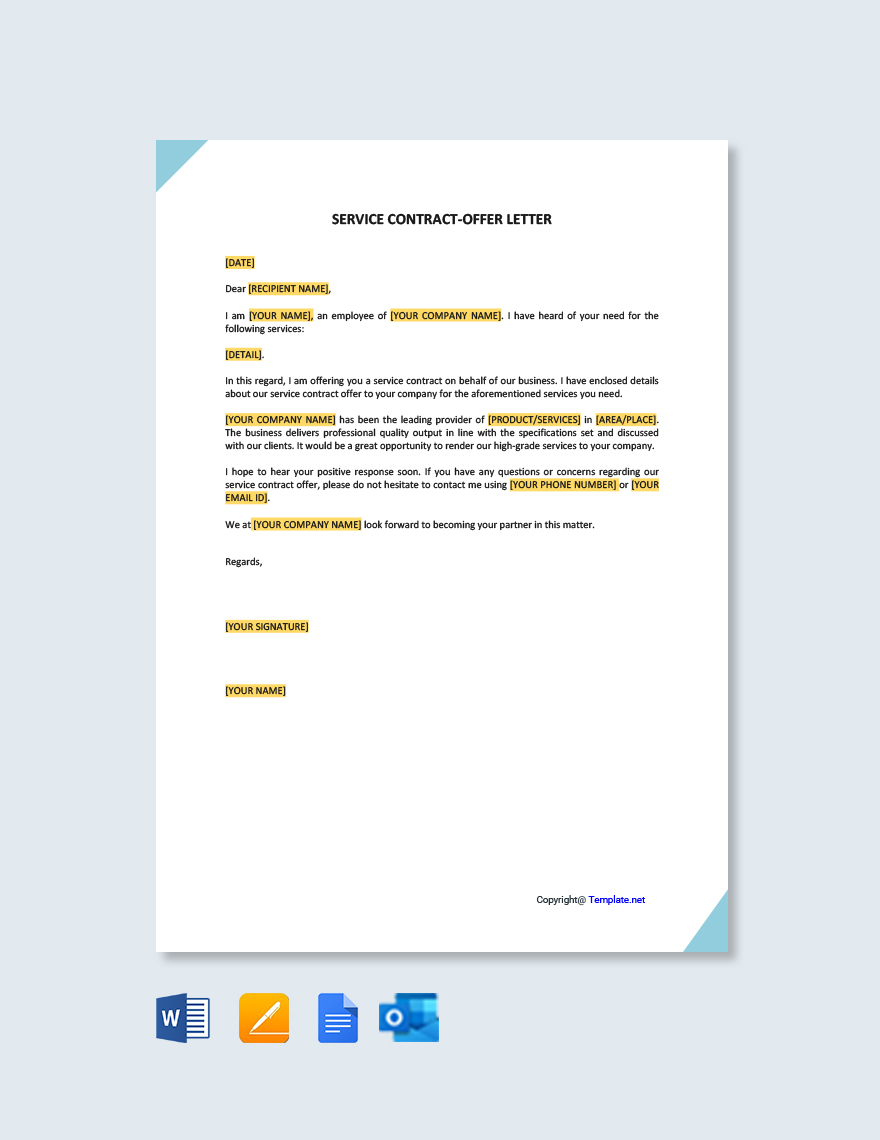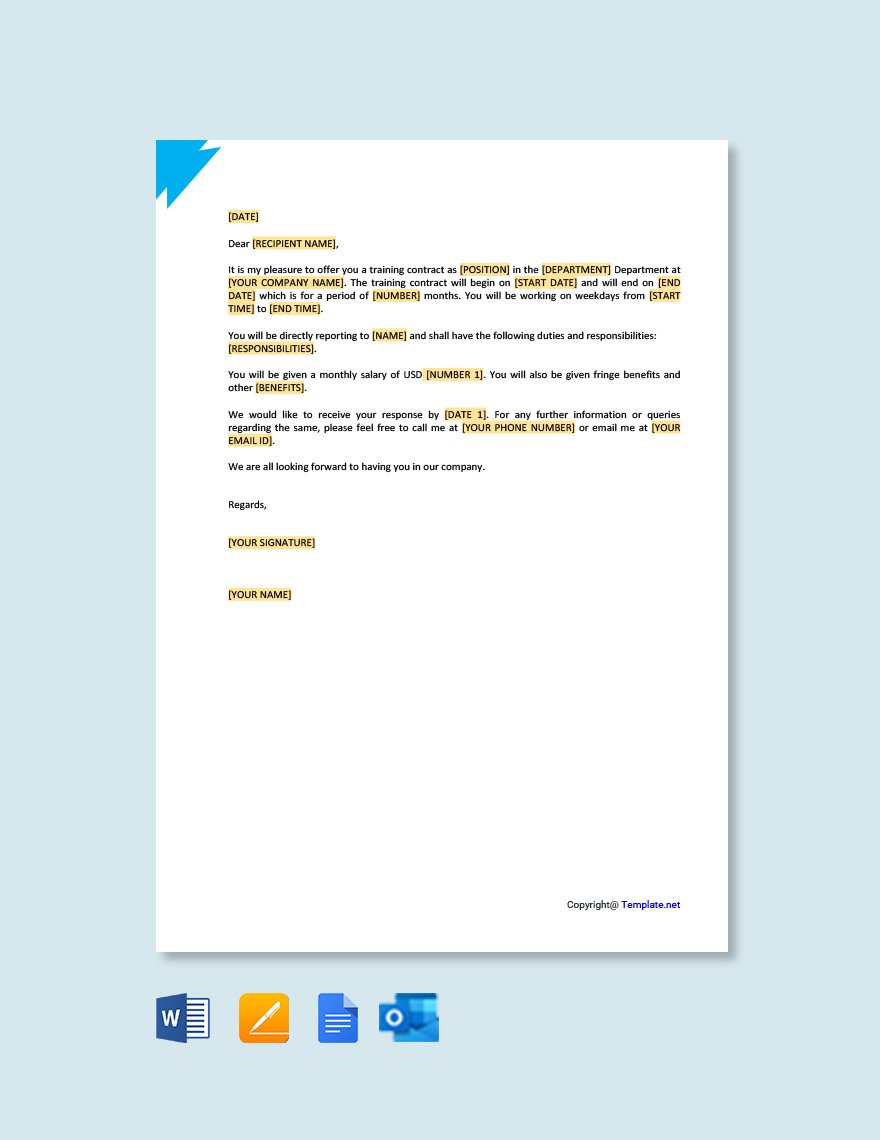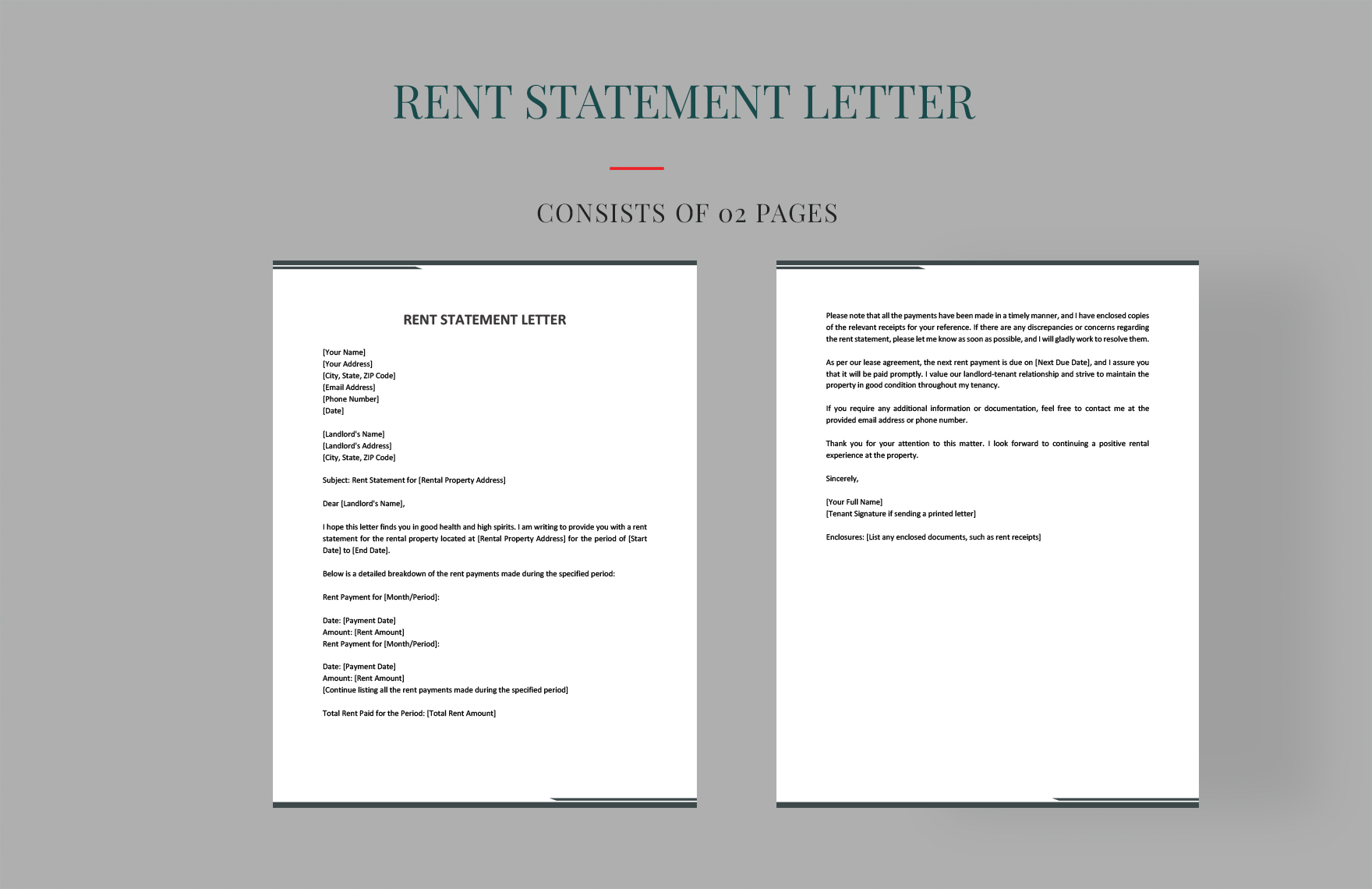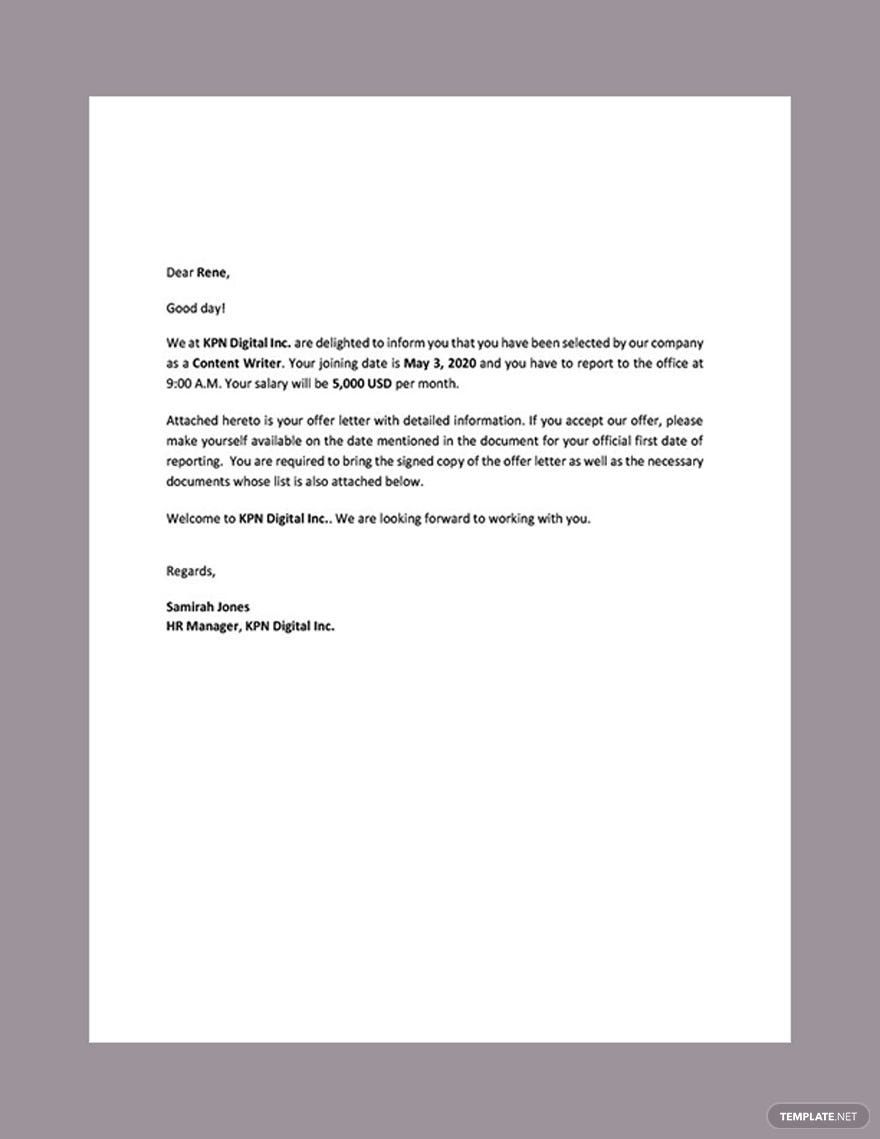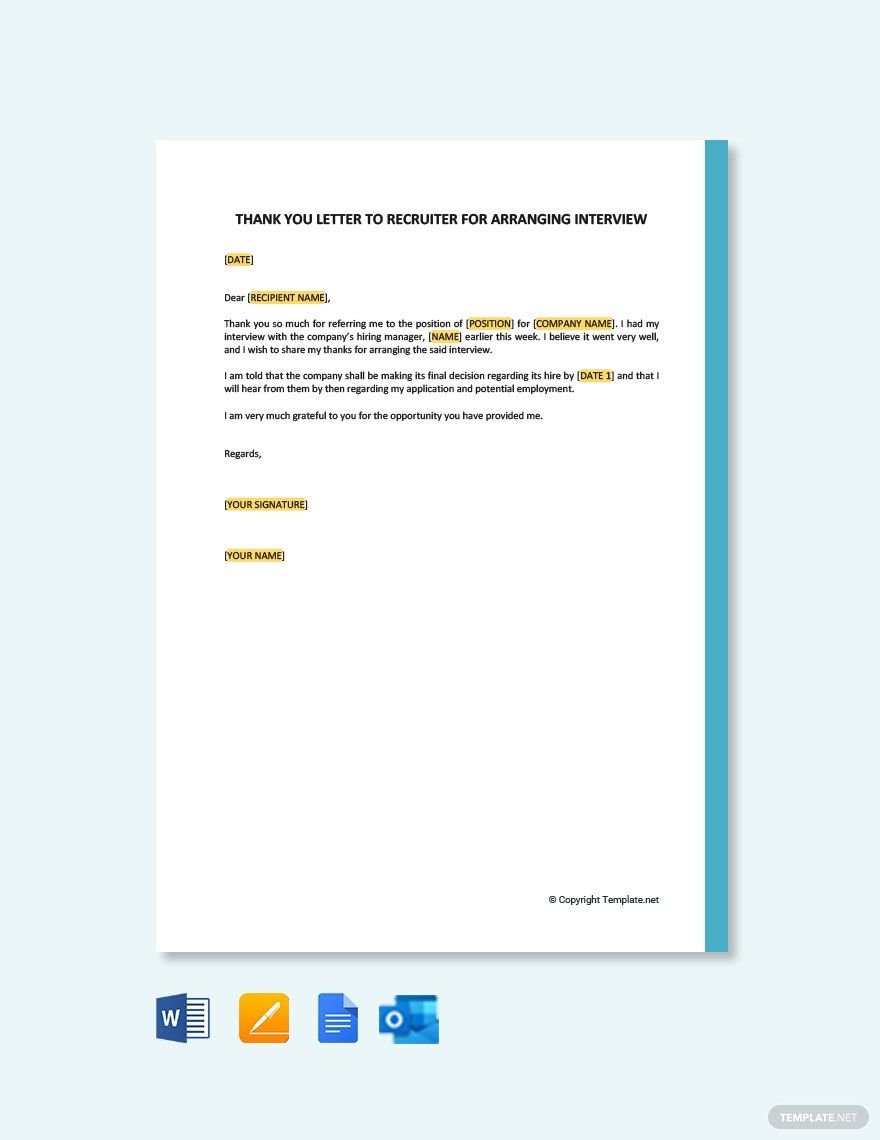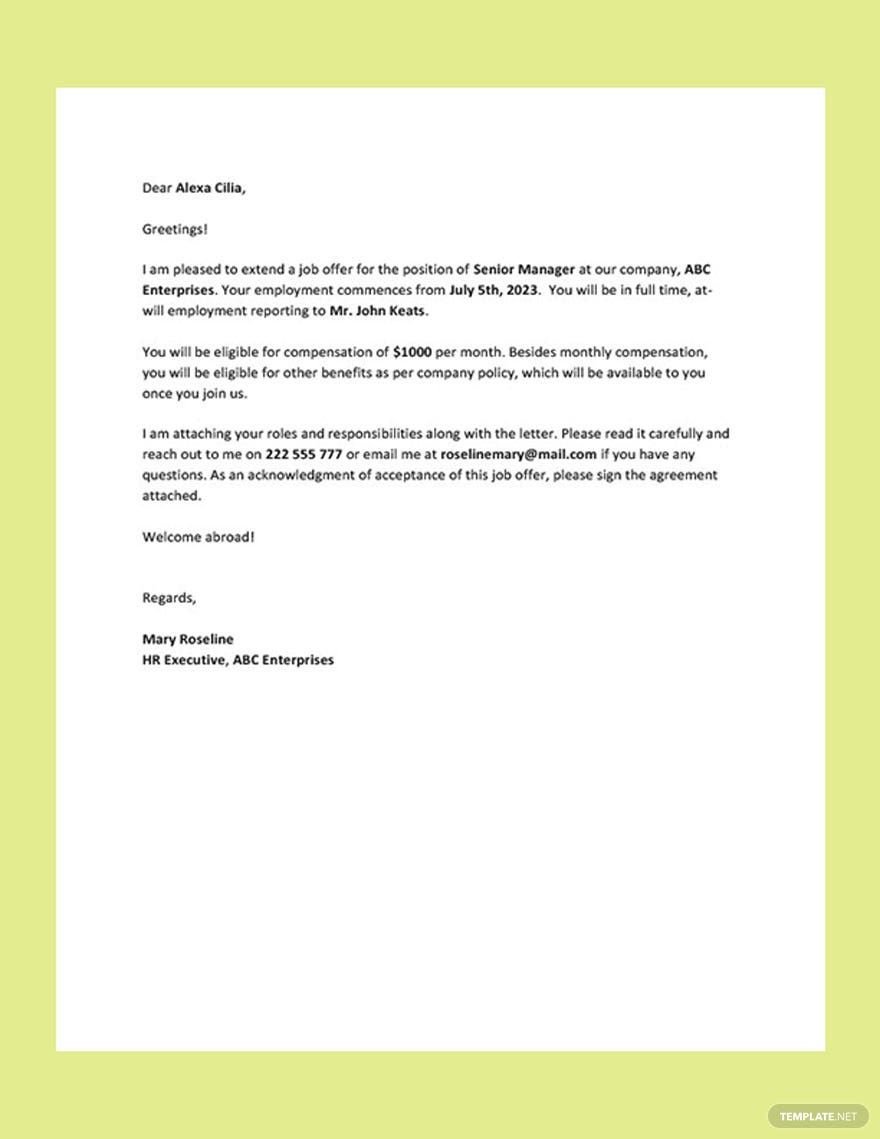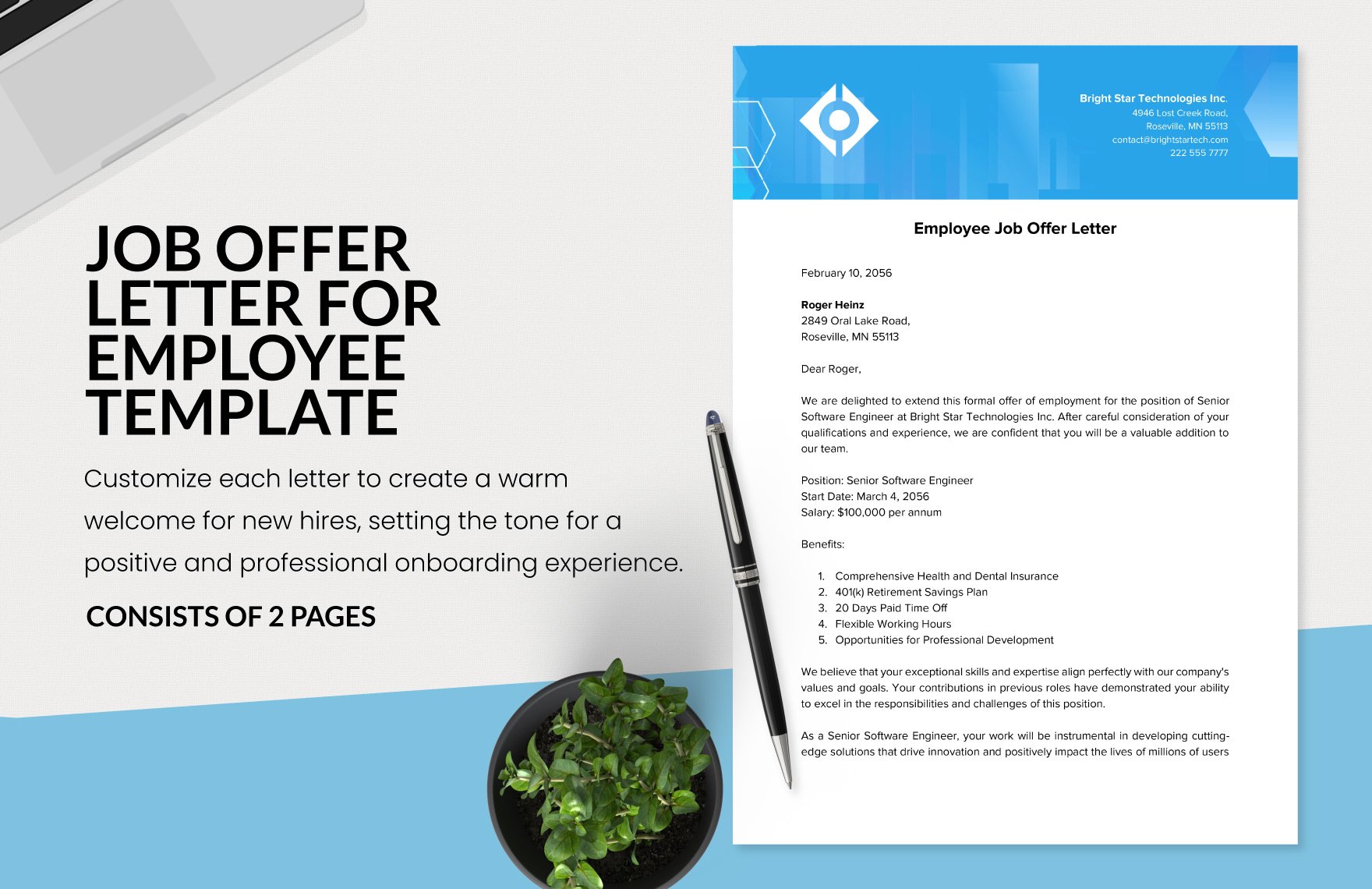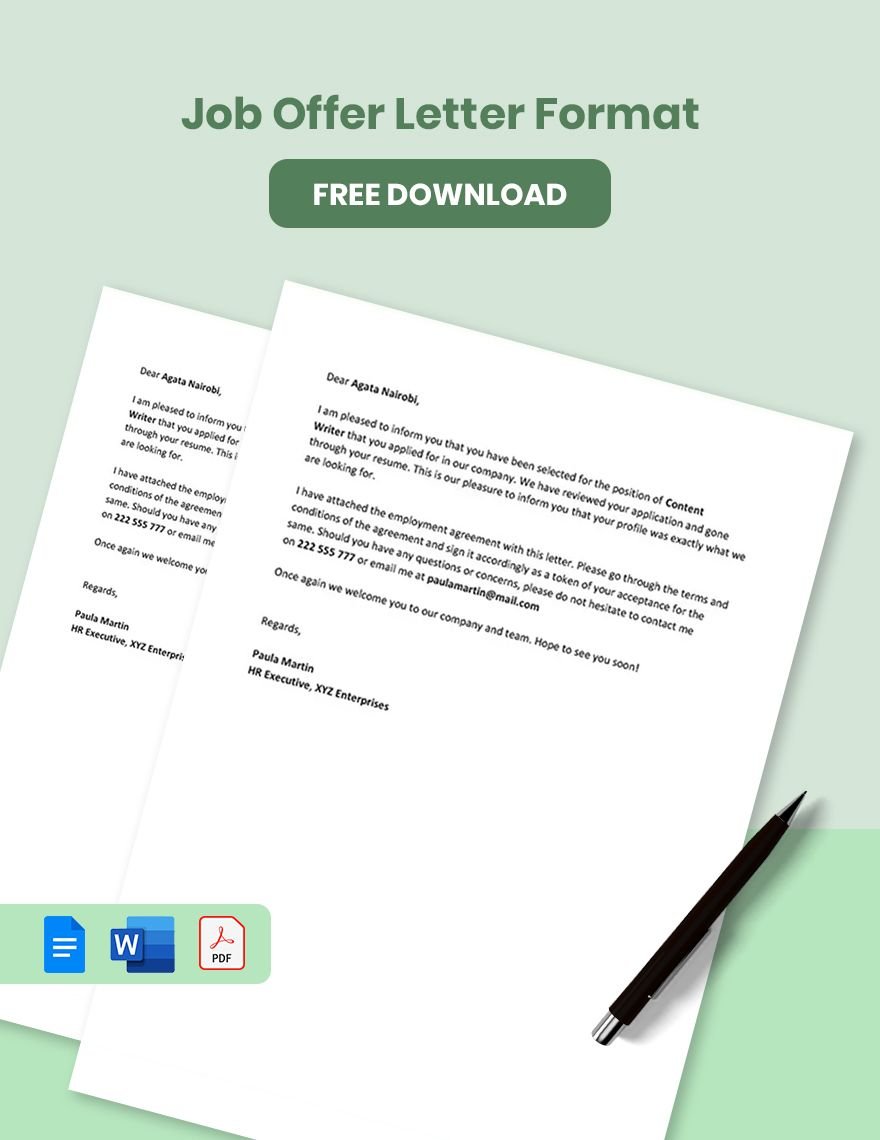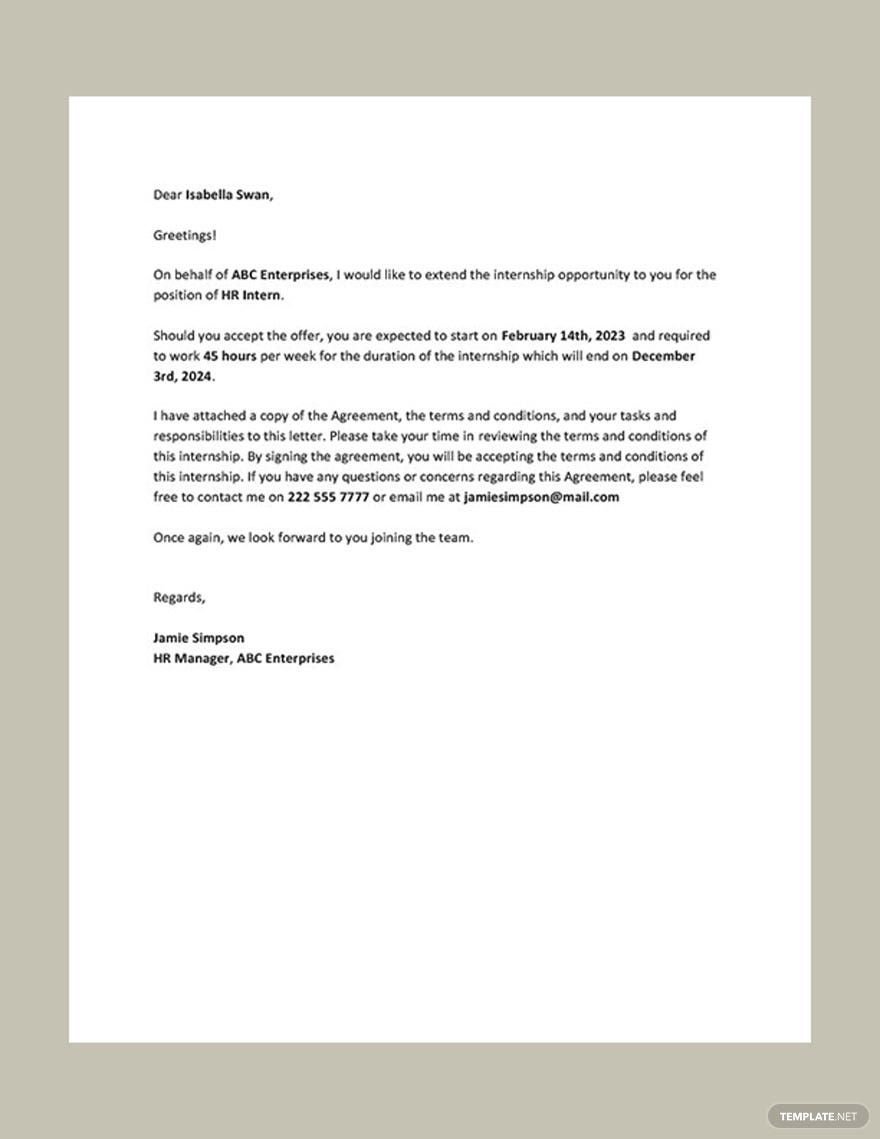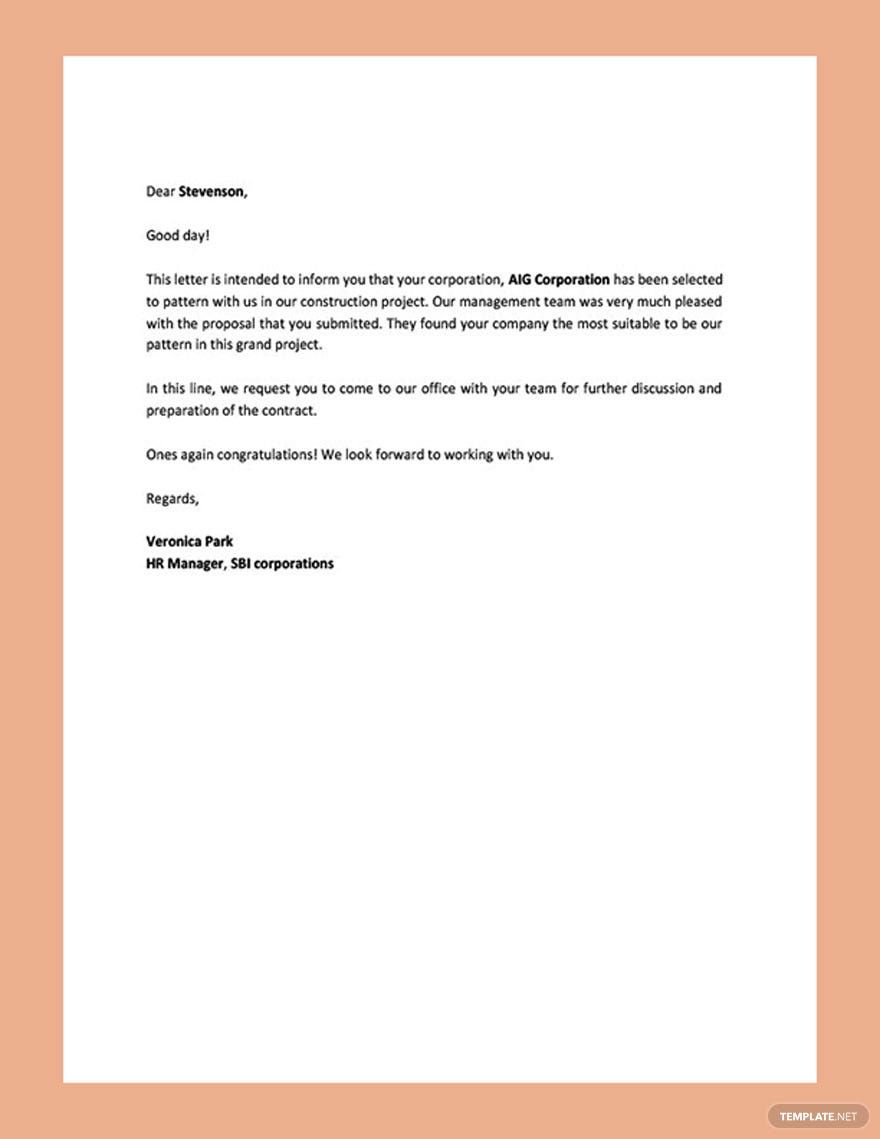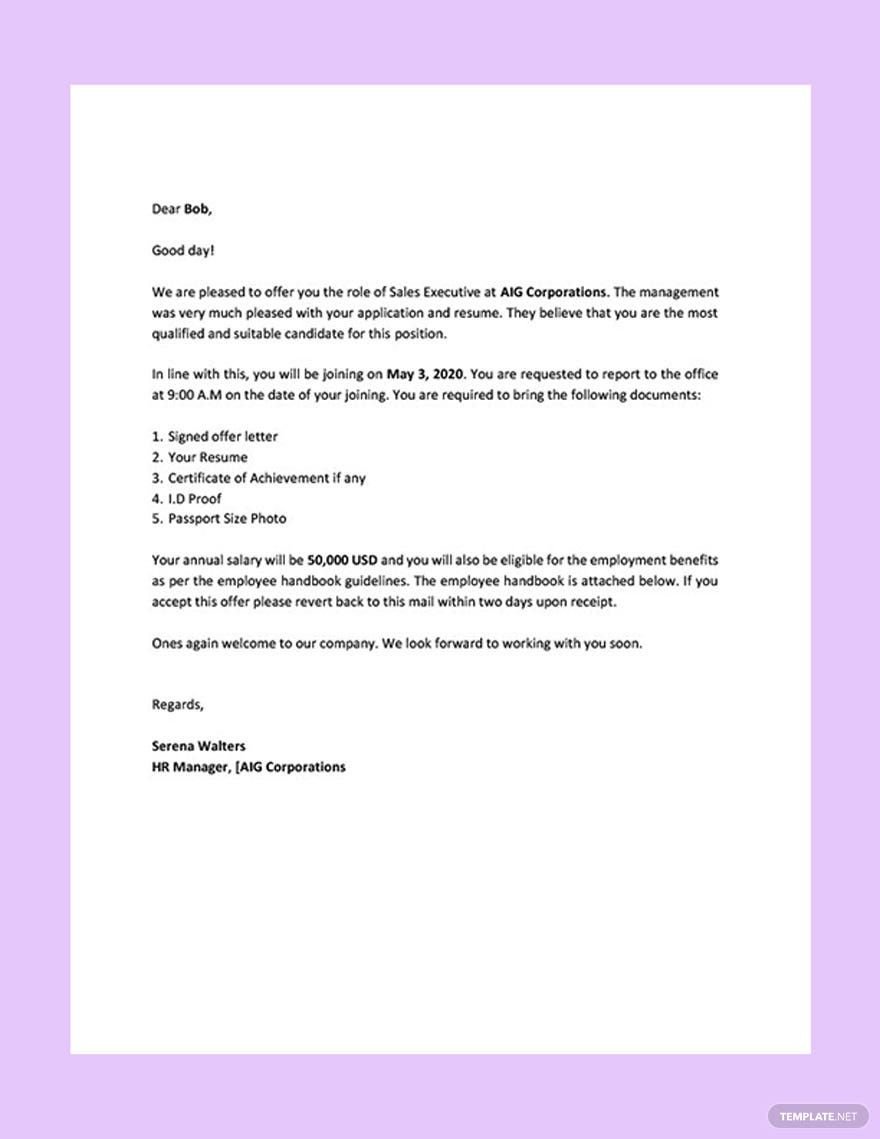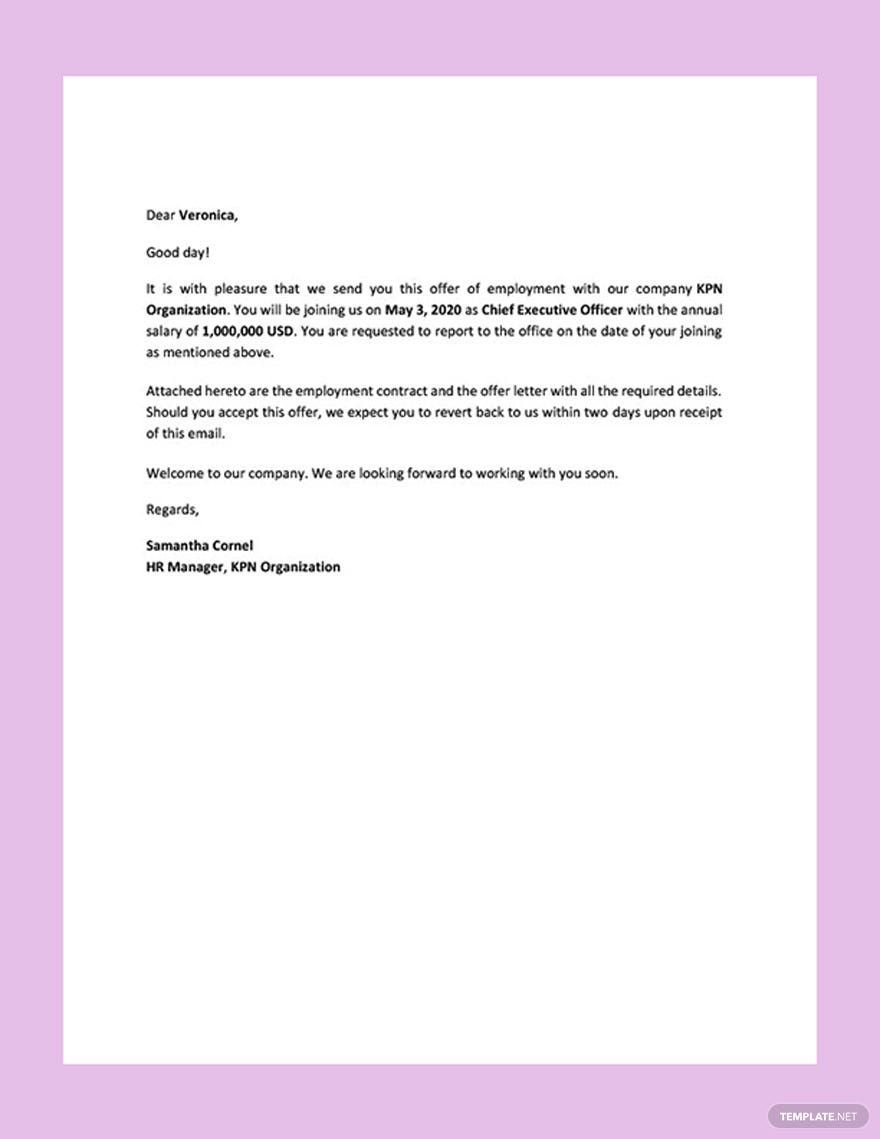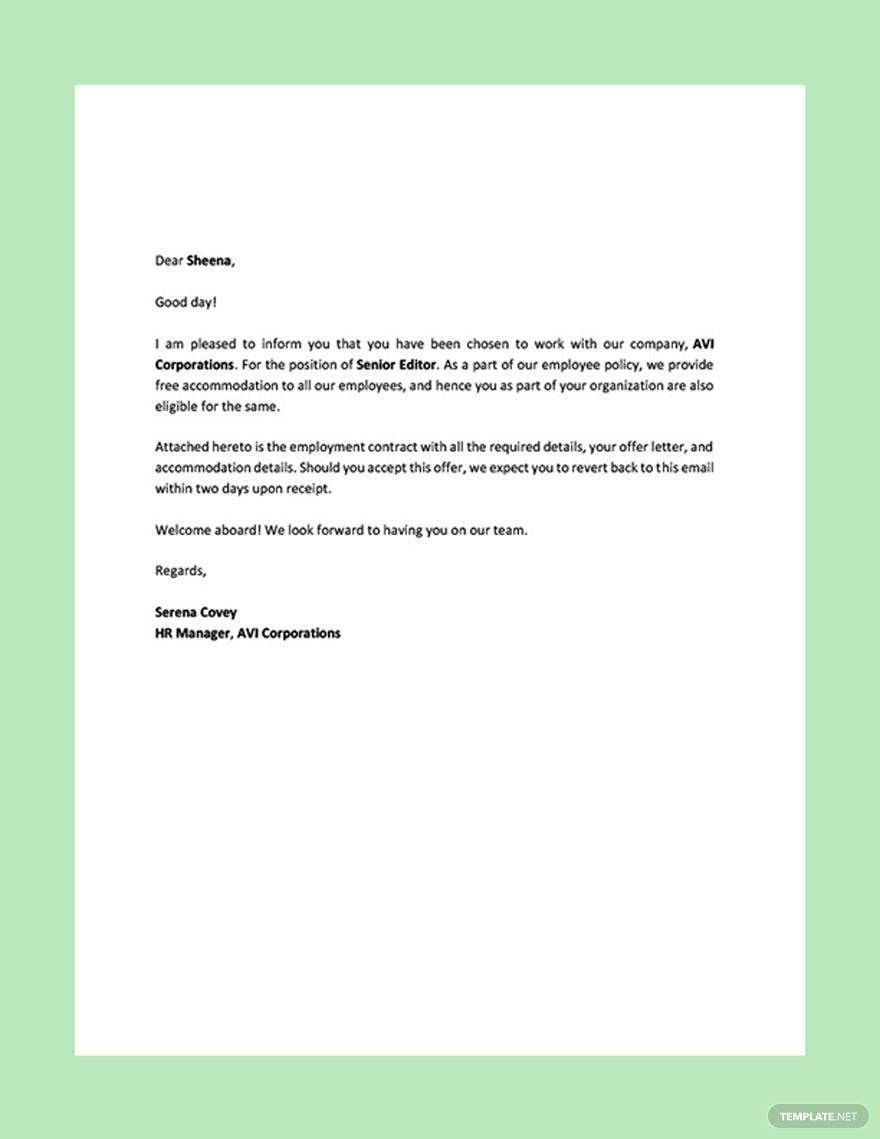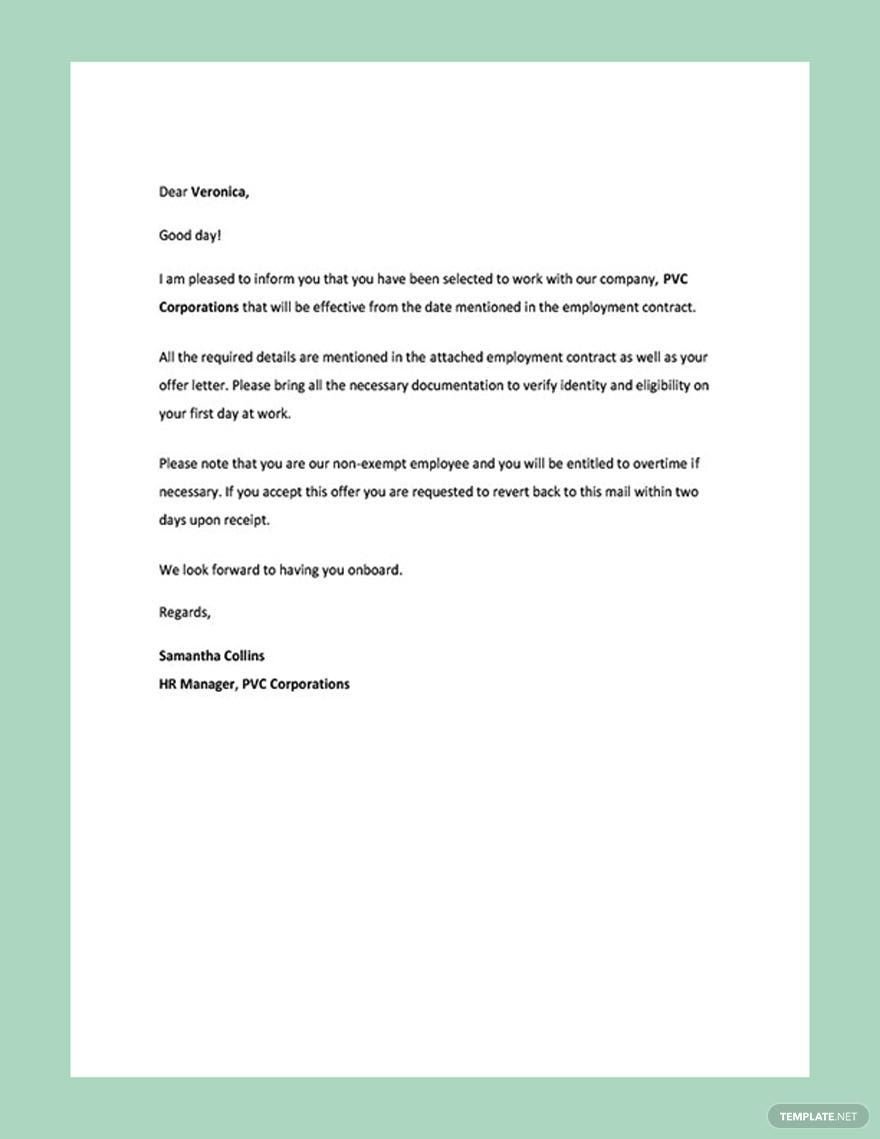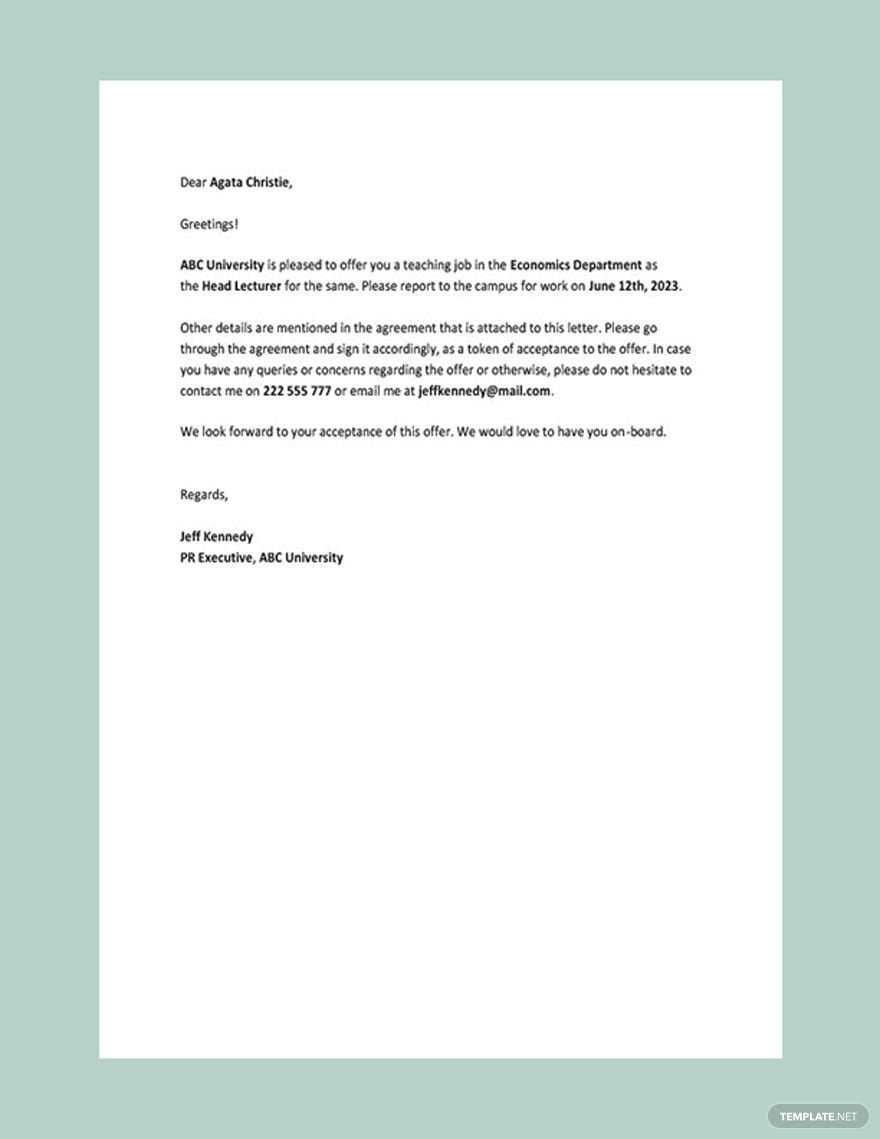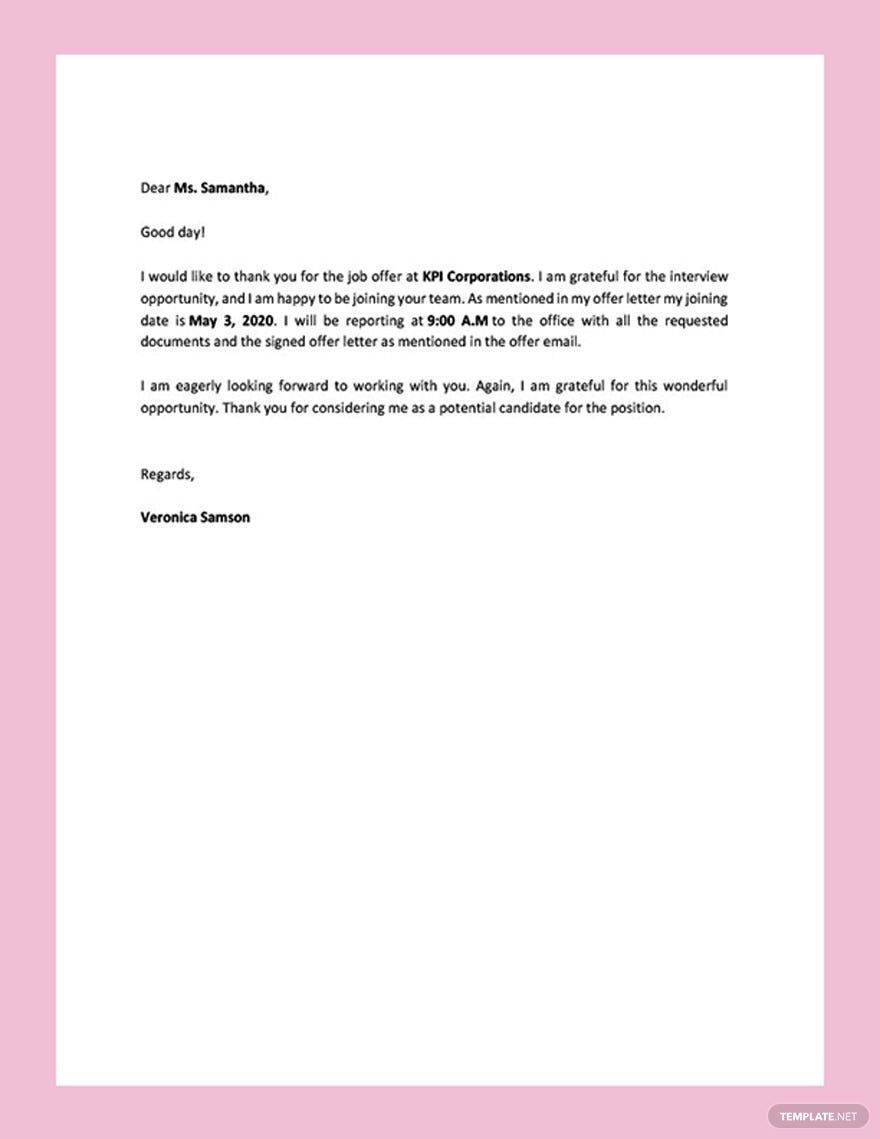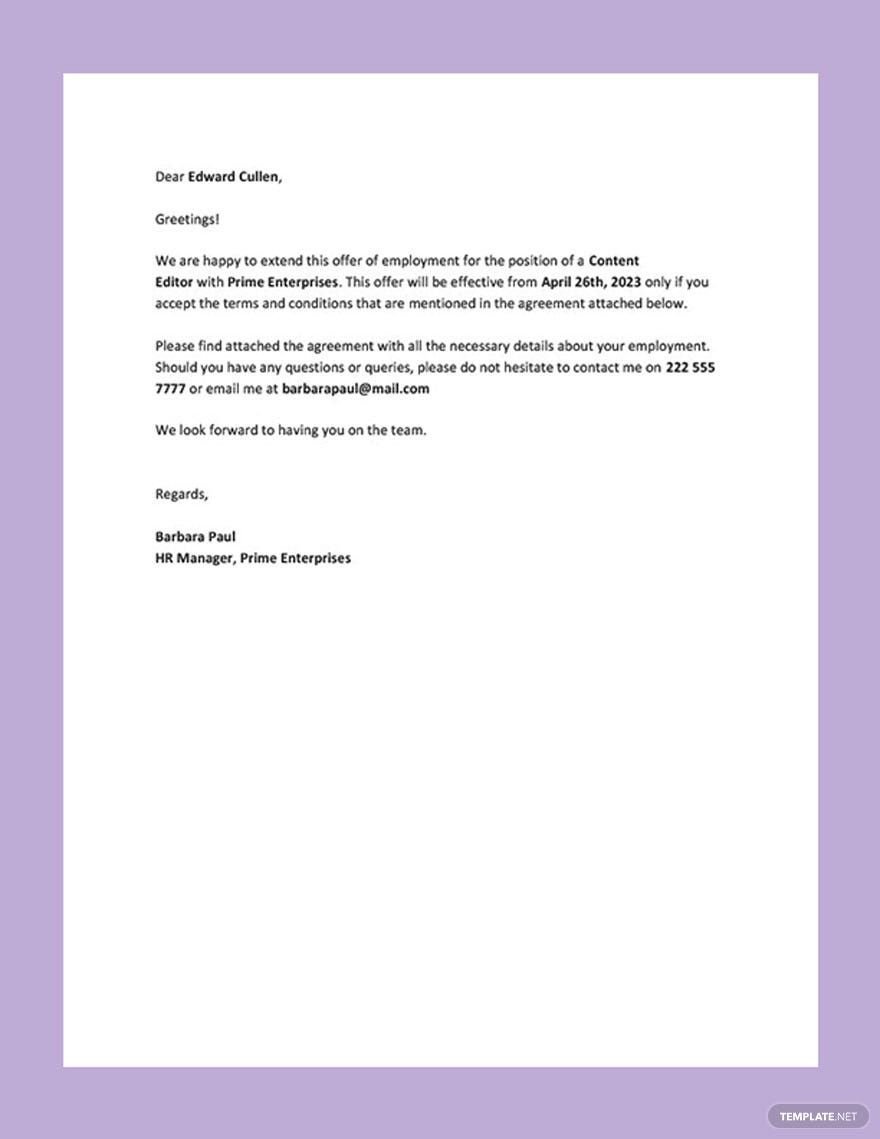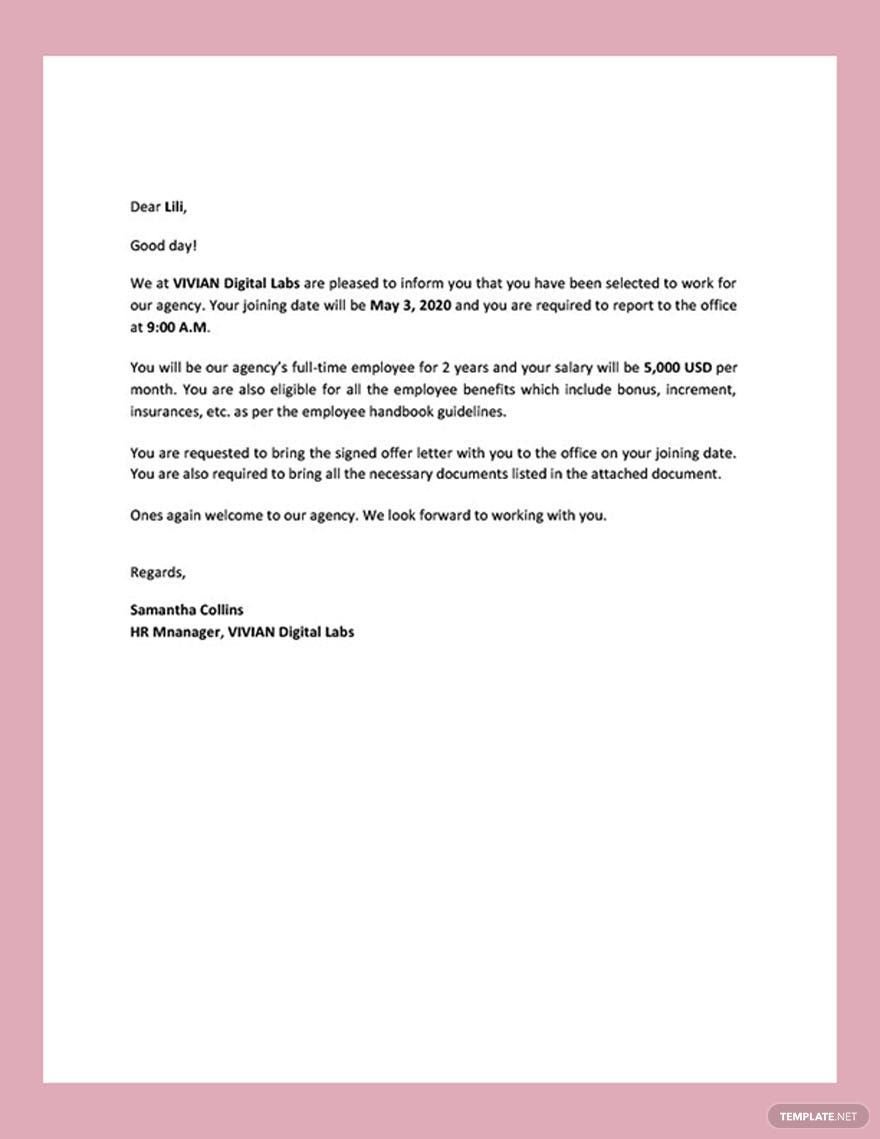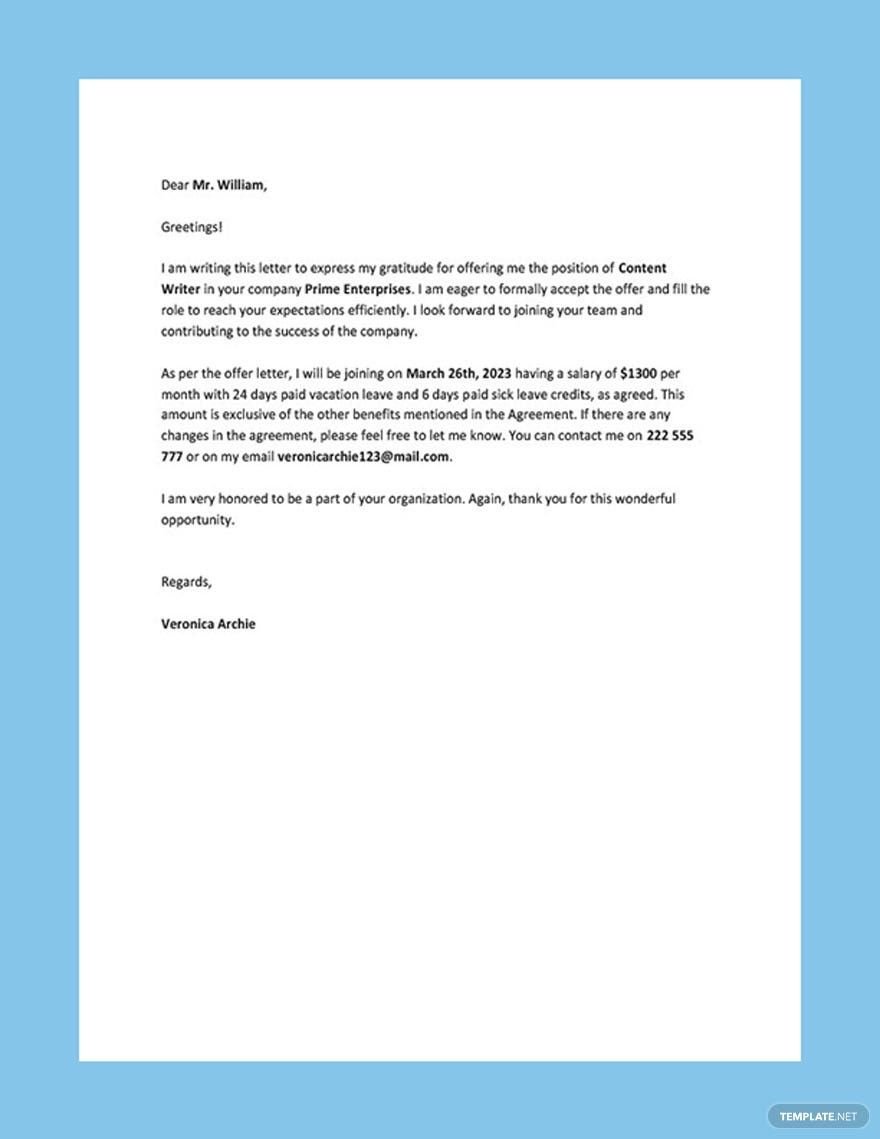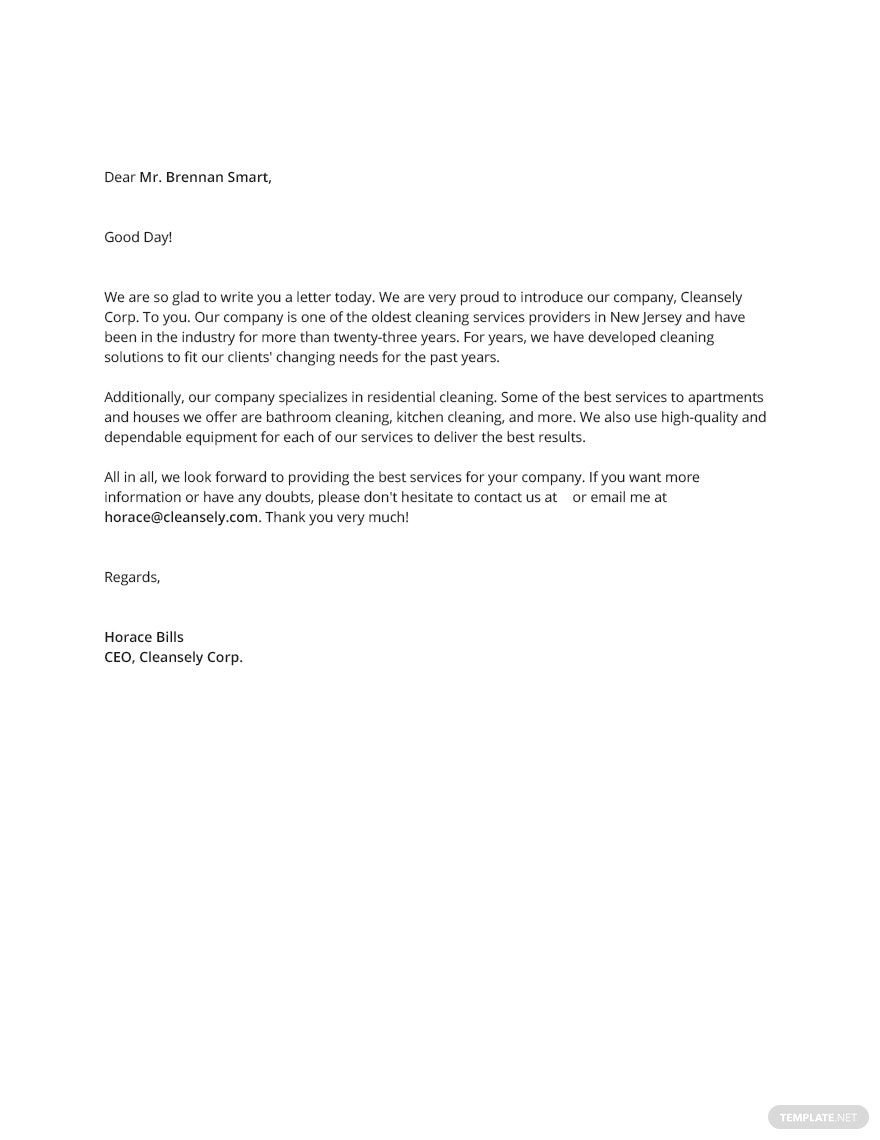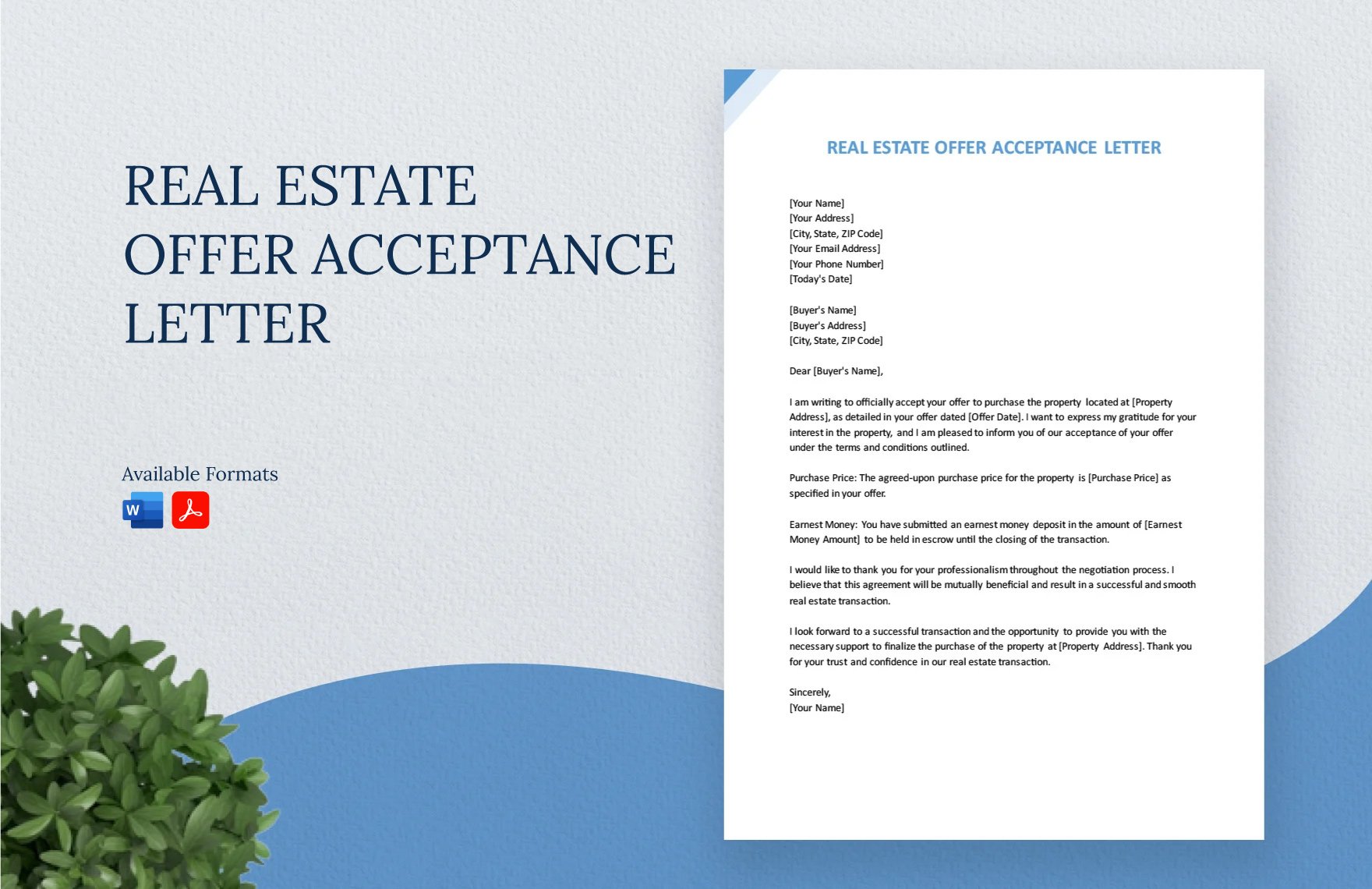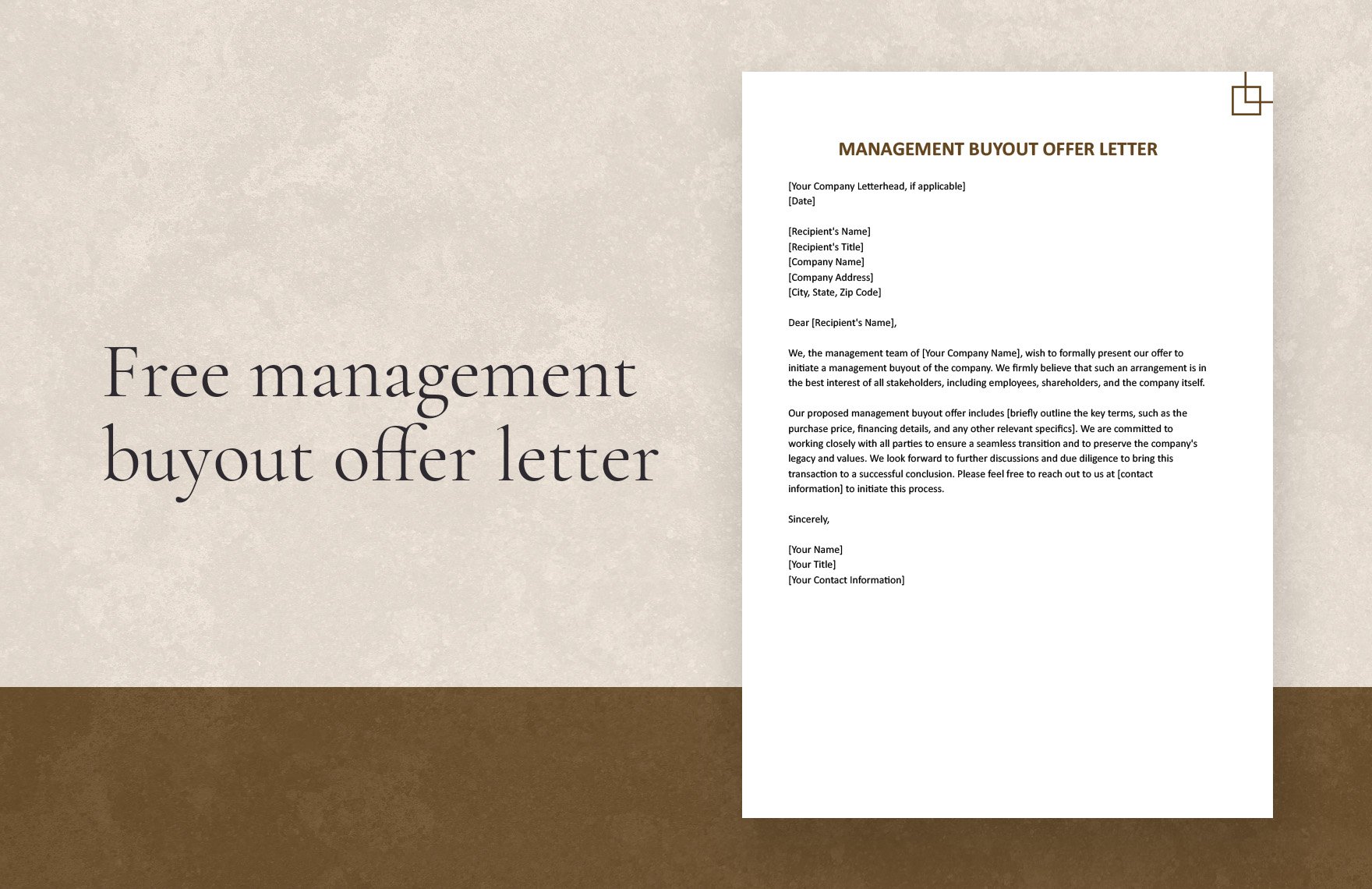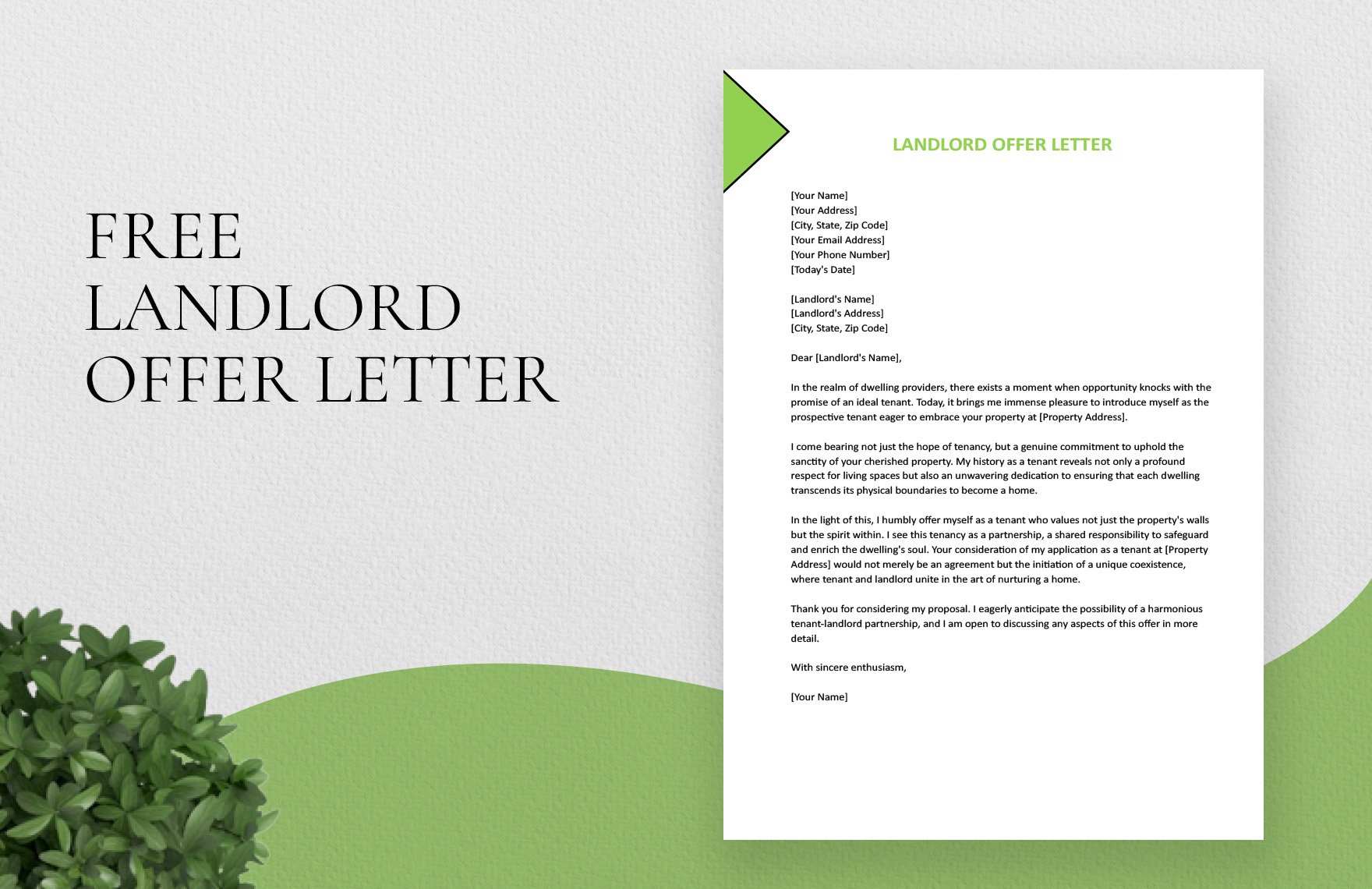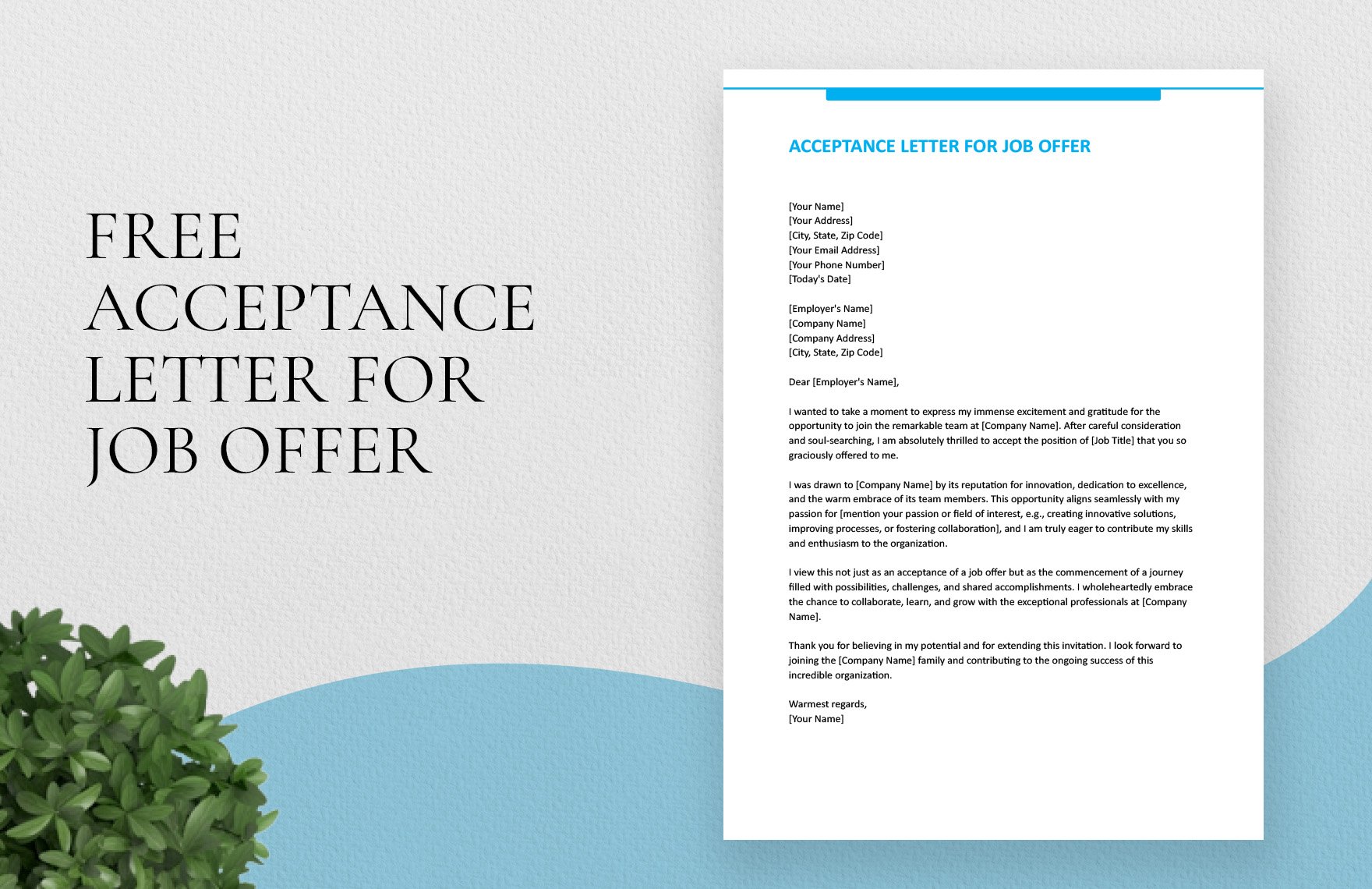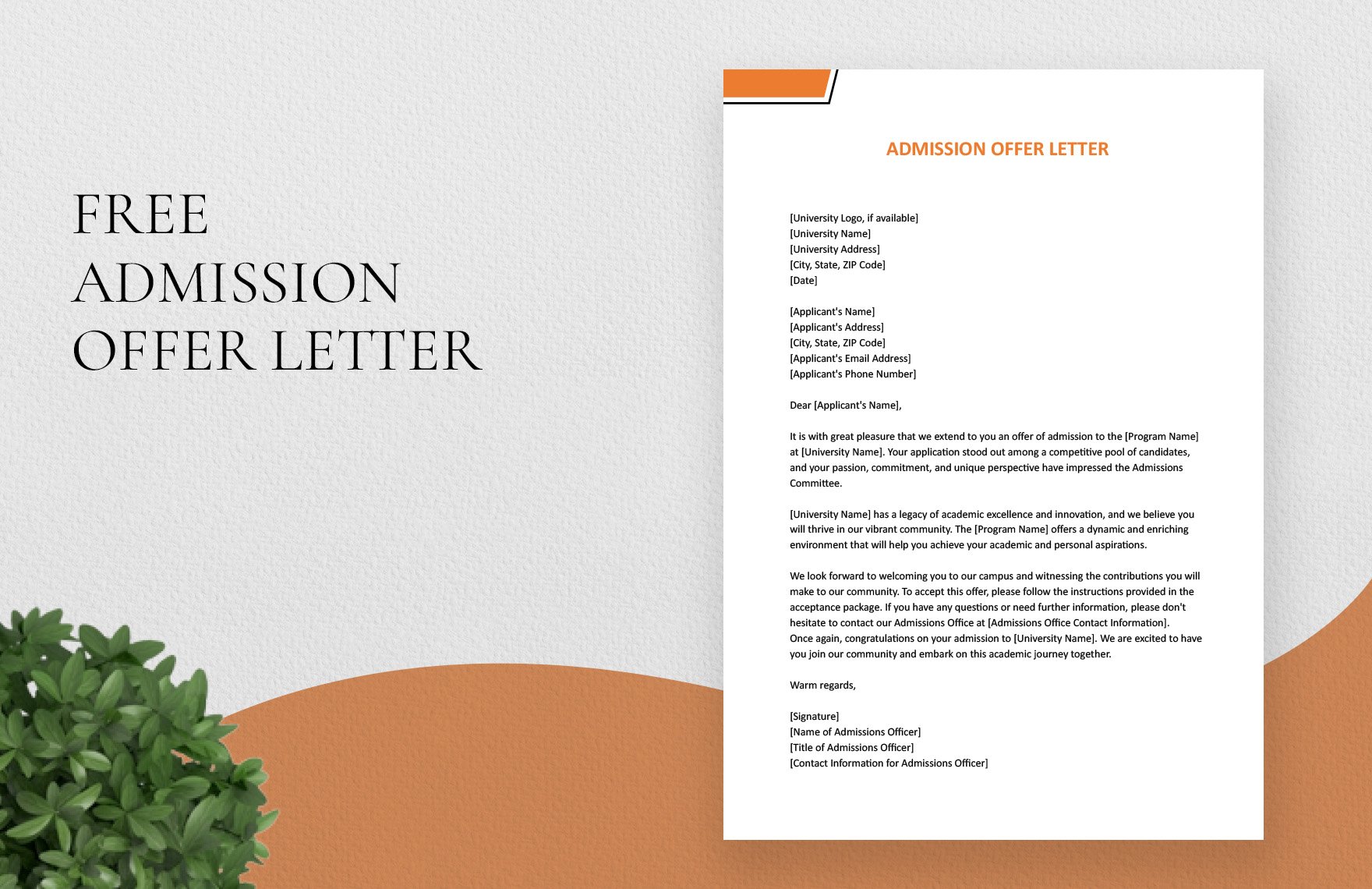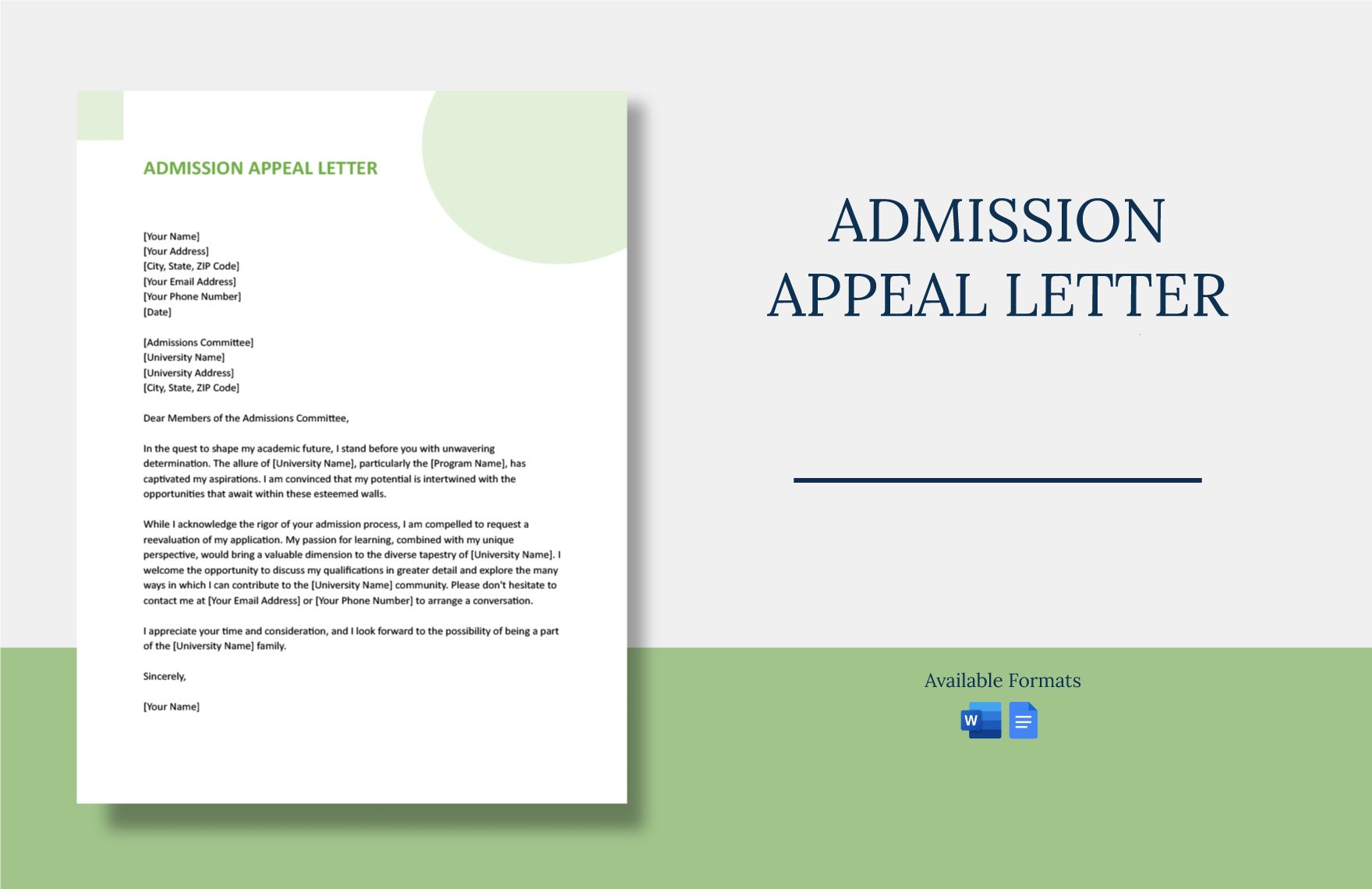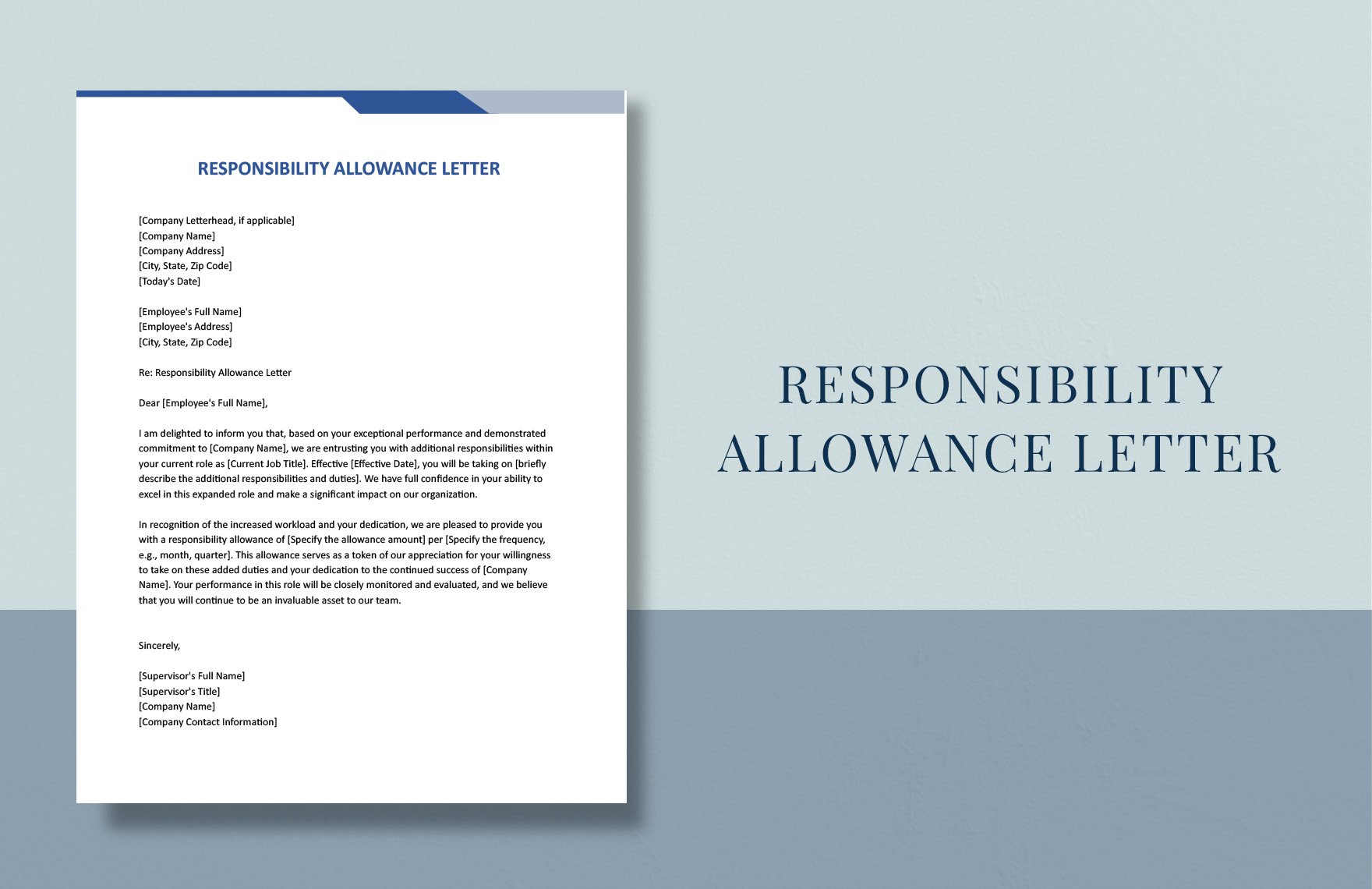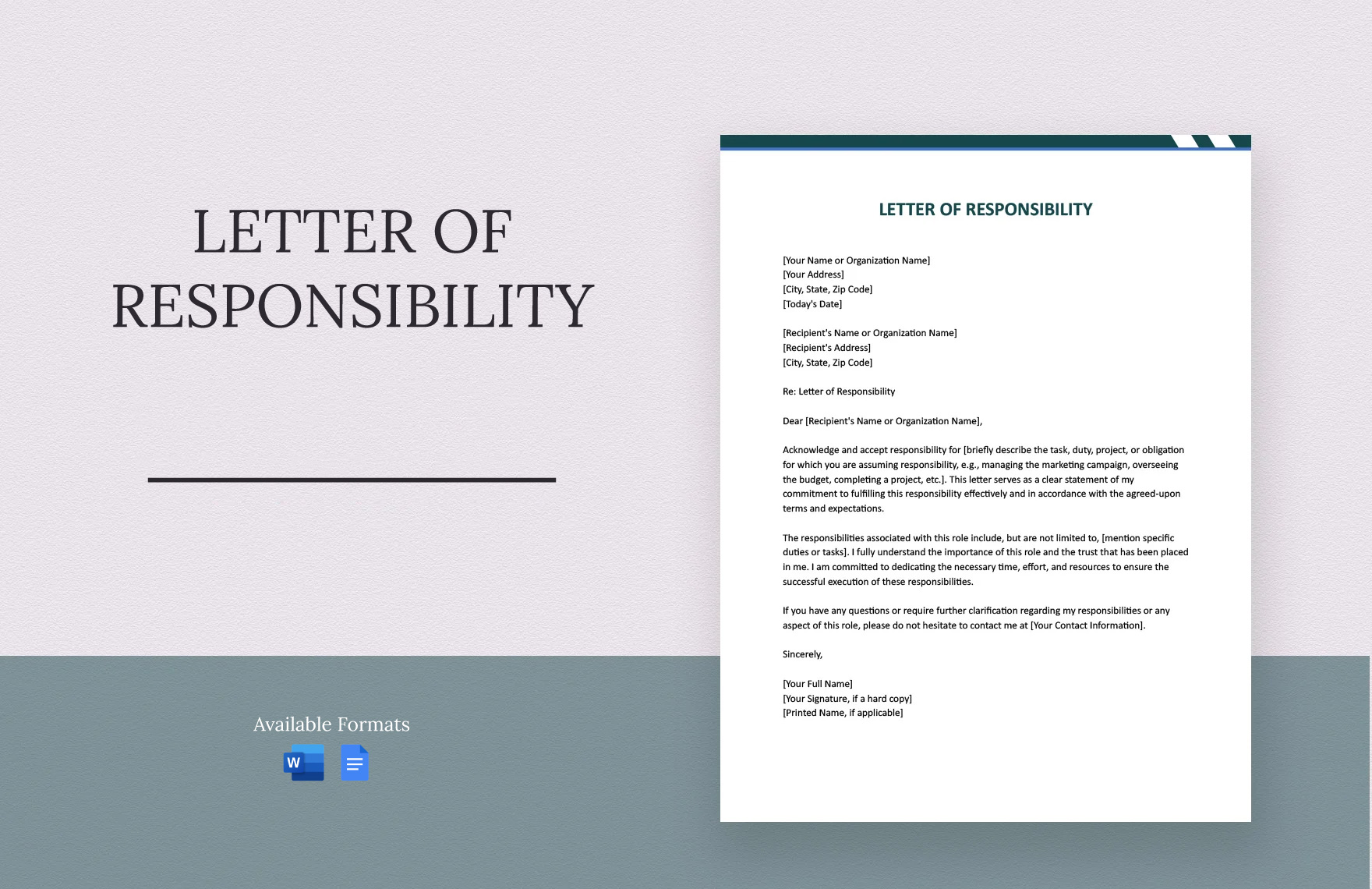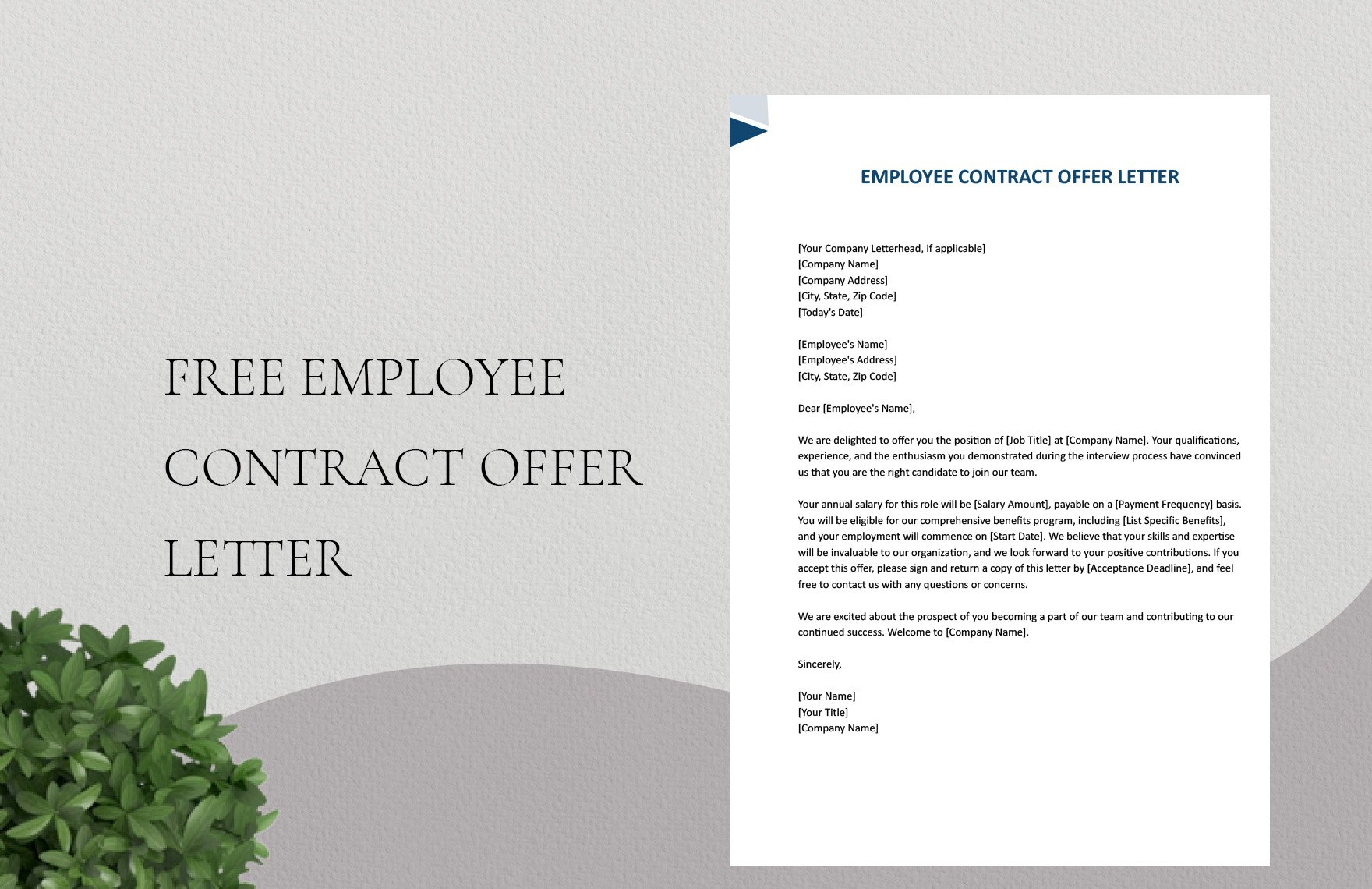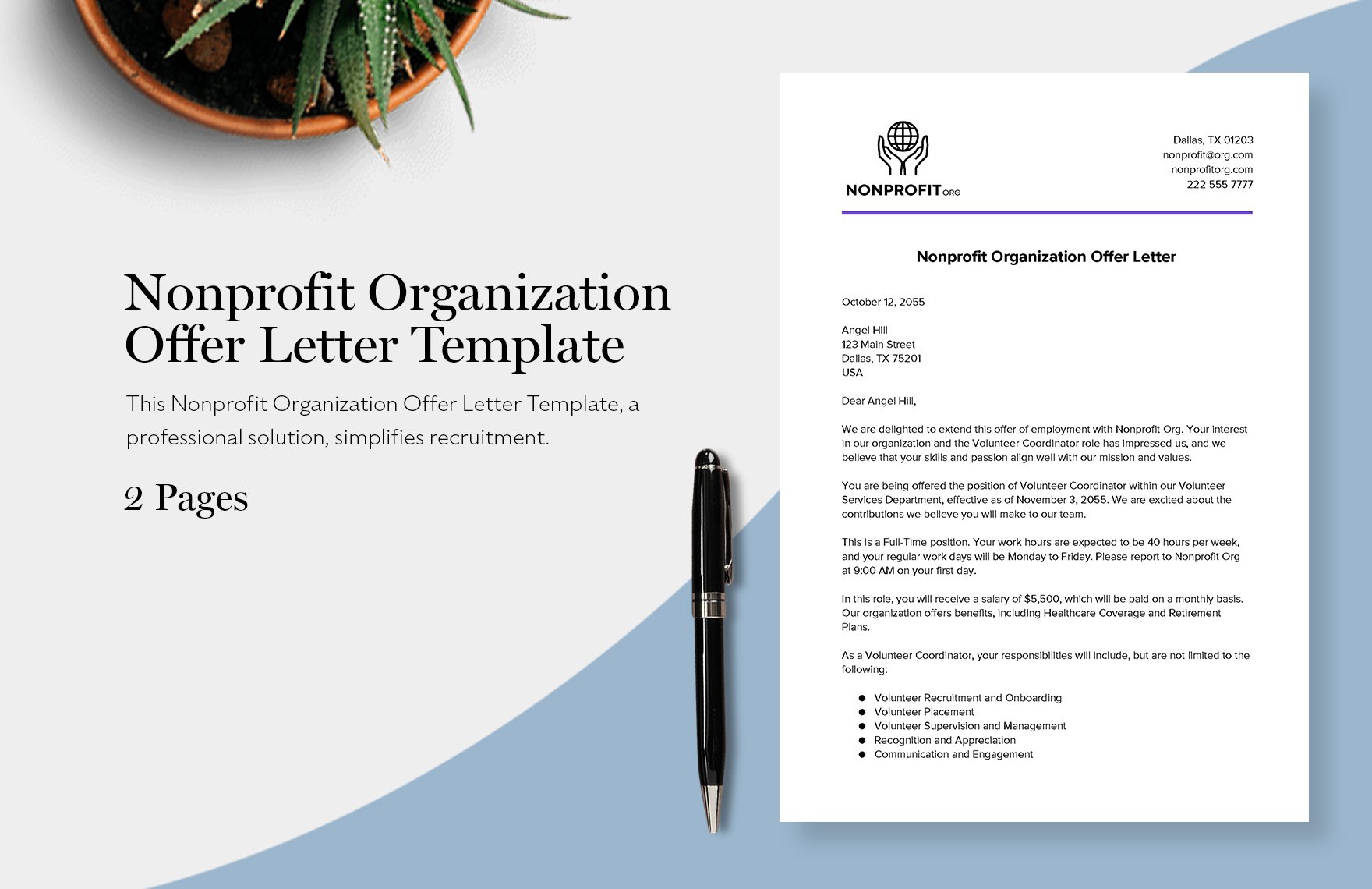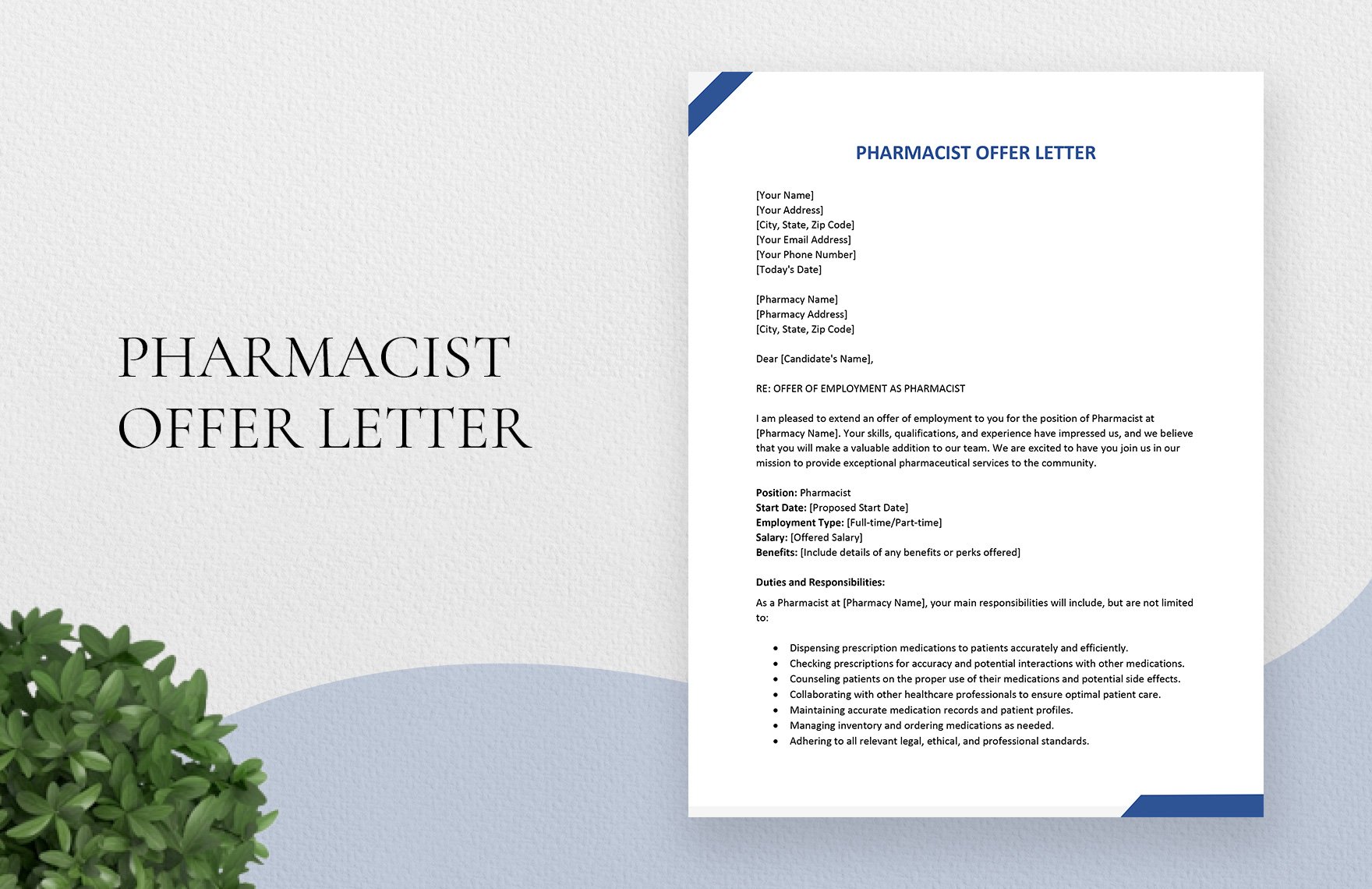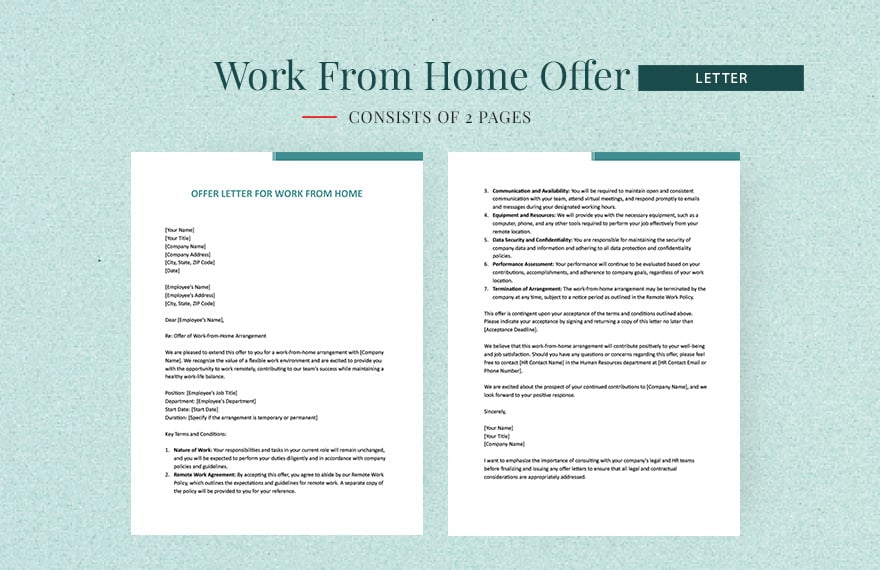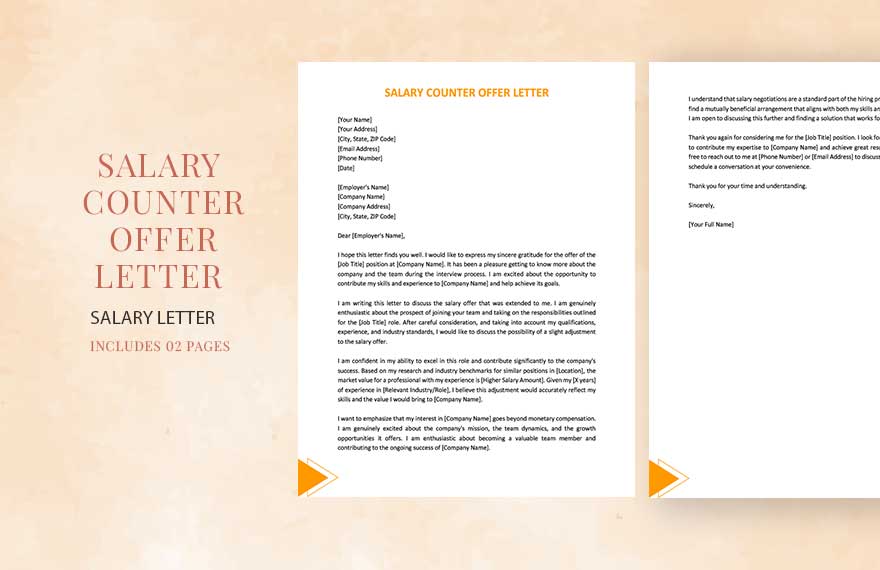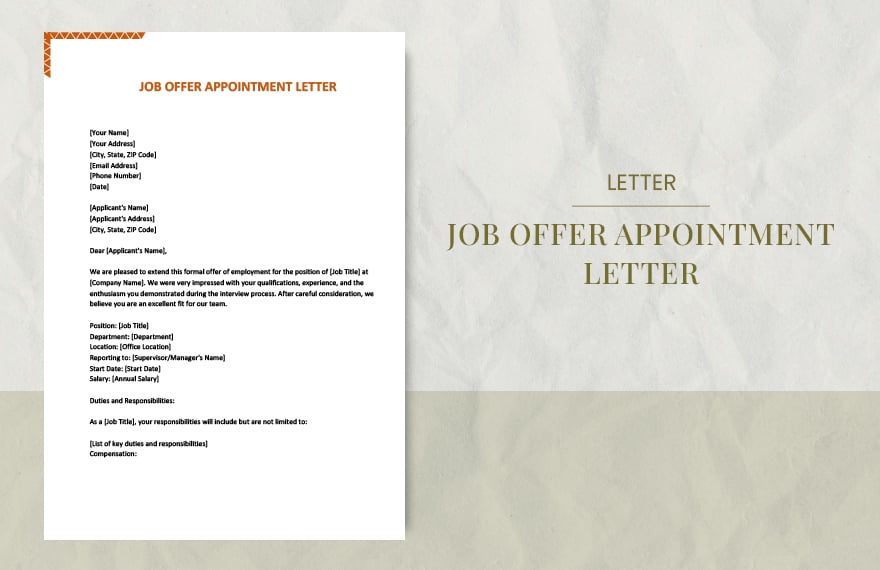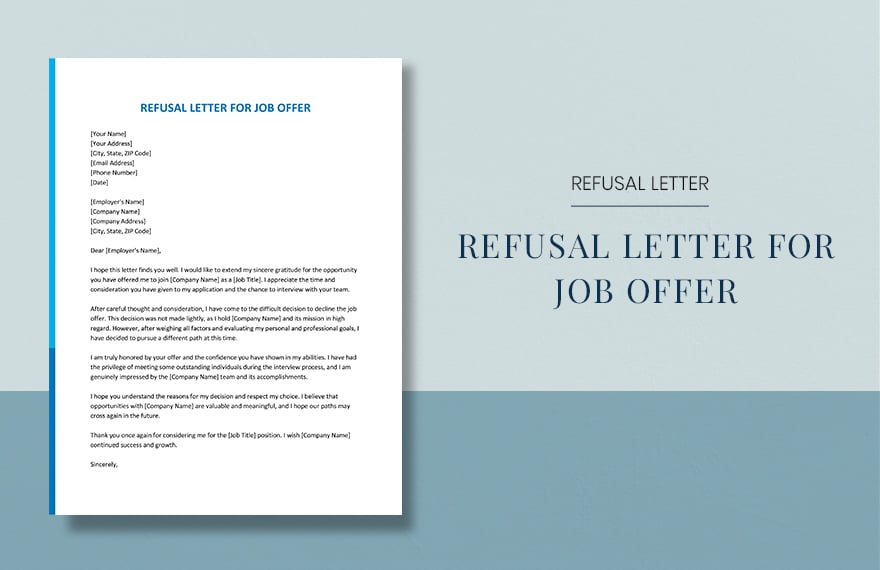Create an official document to secure the best candidate who applied to your company. Download one of our premium Offer Letter Templates for free and craft an engaging, informative offer letter that outlines the package you are offering to the chosen candidate. Our sample files are ready-made and free to download. They are easy to use and fully customizable in all versions of Microsoft Word and available in A4 and US letter sizes. Offer the job position to the candidate and give them the confidence to accept the job. What are you waiting for? Download a template today!
How To Make An Offer Letter In Microsoft Word
Offer letters and recommendation letters are two different things. An offer letter is a formal written document sent by a company to an employment applicant. Usually, the recruiter will call the chosen applicant to let them know they are being given the position. A letter of offer enables you to identify the facts about the offer, highlight the duties of the job, and emphasize appropriate business information. The offer letter serves as the crucial reference point if the candidate requests to negotiate problems such as wage or vacation.
Employers draft a job offer letters and give them before their first day of the job to freshly recruited staff. These letters comprise the employment contexts mentioned during the process of the interview and work offer. When both parties signed the letters, letters of offer are considered legal papers and could be used to resolve any disagreements that may arise about terms of employment. We will help you in creating one with the help of our easy guide curated below.
1. Write Down Basic Information
Offer letters commonly include information about the position, compensation, and start date. The first items that can be seen in an offer letter are the position title and responsibilities. Under the job description, specific tasks must be mentioned in detail so that the worker understands precisely what is expected of him. The section on compensation comprises a yearly base salary and a payment schedule. This data is typically excluded if the position offers the opportunity for bonus payments.
2. List Benefits
A letter of offer usually involves data about fundamental benefits. Examples of employee benefits include disability, dentistry, vision insurance, refunds of tuition, stock options, profit-sharing, holiday, and sick time. Specific data on these benefits is usually included as a component of a benefit package. These can be offered in accordance with the letter of offer or when the job starts.
3. Stipulate Contingencies
The primary basis for hiring decisions is how candidates perform when they are interviewed. Although background checks are usually carried out before employment, those contingencies may be specified in the letter. Offer letters may be stretched until tax forms, legal agreements, and drug screens. The aim of including contingencies is to safeguard employers against legal commitments if a job offer is canceled, on the basis of data acquired after the offer has been extended. An employer may decide, for instance, to take back a work offer from a candidate who has not passed the drug test.
4. Include an At-Will Status
Many countries conform to an at-will policy. According to this policy, for whatever reason, staff can resign at any moment. Employers can, but not for any reason, terminate staff at any moment. Discriminatory terminations are illegitimate. An "at-will" work interpretation may appear on an employment application or in an employee handbook.
5. Embed your Letter in an Envelope
After you print your offer letters, embed them inside a professional envelope. No need to look for an aesthetically-pleasing envelope; a simple and neat one is perfect.
